
I, Warbot: The Dawn of Artificially Intelligent Conflict
by
Kenneth Payne
Published 16 Jun 2021
Television news broadcasts showed flickering black and white images of a cross-hair settling over a building or vehicle, before the screen flashed blinding white as the target was destroyed. And lastly, the Patriot interceptor batteries, deployed to Israel to guard against Saddam’s threats to attack its cities with his crude ‘Scud’ missiles, a derivative of the venerable Nazi V2 rockets. The brief combat was so one-sided that almost everyone was surprised, including the Americans, who had anticipated a tougher fight. The lesson was clear—combat veterans with capable legacy equipment were simply no match for the new American high-tech way of war. The innovations built on America’s growing dominance in information technologies, and the strong links between its university research community, the Pentagon, defence contractors, and even the more freewheeling high-tech community in Silicon Valley.1 Thirty years earlier, President Eisenhower had soberly warned of a ‘military industrial complex’ that might test the social contract in America.
…
A-10 Warthog abacuses Abbottabad, Pakistan Able Archer (1983) acoustic decoys acoustic torpedoes Adams, Douglas Aegis combat system Aerostatic Corps affective empathy Affecto Afghanistan agency aircraft see also dogfighting; drones aircraft carriers algorithms algorithm creation Alpha biases choreography deep fakes DeepMind, see DeepMind emotion recognition F-117 Nighthawk facial recognition genetic selection imagery analysis meta-learning natural language processing object recognition predictive policing alien hand syndrome Aliens (1986 film) Alpha AlphaGo Altered Carbon (television series) Amazon Amnesty International amygdala Andropov, Yuri Anduril Ghost anti-personnel mines ants Apple Aristotle armour arms races Army Research Lab Army Signal Corps Arnalds, Ólafur ARPA Art of War, The (Sun Tzu) art Artificial Intelligence agency and architecture autonomy and as ‘brittle’ connectionism definition of decision-making technology expert systems and feedback loops fuzzy logic innateness intelligence analysis meta-learning as ‘narrow’ needle-in-a-haystack problems neural networks reinforcement learning ‘strong AI’ symbolic logic and unsupervised learning ‘winters’ artificial neural networks Ashby, William Ross Asimov, Isaac Asperger syndrome Astute class boats Atari Breakout (1976) Montezuma’s Revenge (1984) Space Invaders (1978) Athens ATLAS robots augmented intelligence Austin Powers (1997 film) Australia authoritarianism autonomous vehicles see also drones autonomy B-21 Raider B-52 Stratofortress B2 Spirit Baby X BAE Systems Baghdad, Iraq Baidu balloons ban, campaigns for Banks, Iain Battle of Britain (1940) Battle of Fleurus (1794) Battle of Midway (1942) Battle of Sedan (1940) batwing design BBN Beautiful Mind, A (2001 film) beetles Bell Laboratories Bengio, Yoshua Berlin Crisis (1961) biases big data Bin Laden, Osama binary code biological weapons biotechnology bipolarity bits Black Lives Matter Black Mirror (television series) Blade Runner (1982 film) Blade Runner 2049 (2017 film) Bletchley Park, Buckinghamshire blindness Blunt, Emily board games, see under games boats Boden, Margaret bodies Boeing MQ-25 Stingray Orca submarines Boolean logic Boston Dynamics Bostrom, Nick Boyd, John brain amygdala bodies and chunking dopamine emotion and genetic engineering and language and mind merge and morality and plasticity prediction and subroutines umwelts and Breakout (1976 game) breathing control brittleness brute force Buck Rogers (television series) Campaign against Killer Robots Carlsen, Magnus Carnegie Mellon University Casino Royale (2006 film) Castro, Fidel cat detector centaur combination Central Intelligence Agency (CIA) centre of gravity chaff Challenger Space Shuttle disaster (1986) Chauvet cave, France chemical weapons Chernobyl nuclear disaster (1986) chess centaur teams combinatorial explosion and creativity in Deep Blue game theory and MuZero as toy universe chicken (game) chimeras chimpanzees China aircraft carriers Baidu COVID-19 pandemic (2019–21) D-21 in genetic engineering in GJ-11 Sharp Sword nuclear weapons surveillance in Thucydides trap and US Navy drone seizure (2016) China Lake, California Chomsky, Noam choreography chunking Cicero civilians Clarke, Arthur Charles von Clausewitz, Carl on character on culmination on defence on genius on grammar of war on materiel on nature on poker on willpower on wrestling codebreaking cognitive empathy Cold War (1947–9) arms race Berlin Crisis (1961) Cuban Missile Crisis (1962) F-117 Nighthawk Iran-Iraq War (1980–88) joint action Korean War (1950–53) nuclear weapons research and SR-71 Blackbird U2 incident (1960) Vienna Summit (1961) Vietnam War (1955–75) VRYAN Cole, August combinatorial creativity combinatorial explosion combined arms common sense computers creativity cyber security games graphics processing unit (GPU) mice Moore’s Law symbolic logic viruses VRYAN confirmation bias connectionism consequentialism conservatism Convention on Conventional Weapons ConvNets copying Cormorant cortical interfaces cost-benefit analysis counterfactual regret minimization counterinsurgency doctrine courageous restraint COVID-19 pandemic (2019–21) creativity combinatorial exploratory genetic engineering and mental disorders and transformational criminal law CRISPR, crows Cruise, Thomas Cuban Missile Crisis (1962) culmination Culture novels (Banks) cyber security cybernetics cyborgs Cyc cystic fibrosis D-21 drones Damasio, Antonio dance DARPA autonomous vehicle research battlespace manager codebreaking research cortical interface research cyborg beetle Deep Green expert system programme funding game theory research LongShot programme Mayhem Ng’s helicopter Shakey understanding and reason research unmanned aerial combat research Dartmouth workshop (1956) Dassault data DDoS (distributed denial-of-service) dead hand system decision-making technology Deep Blue deep fakes Deep Green DeepMind AlphaGo Atari playing meta-learning research MuZero object recognition research Quake III competition (2019) deep networks defence industrial complex Defence Innovation Unit Defence Science and Technology Laboratory defence delayed gratification demons deontological approach depth charges Dionysus DNA (deoxyribonucleic acid) dodos dogfighting Alpha domains dot-matrix tongue Dota II (2013 game) double effect drones Cormorant D-21 GJ-11 Sharp Sword Global Hawk Gorgon Stare kamikaze loitering munitions nEUROn operators Predator Reaper reconnaissance RQ-170 Sentinel S-70 Okhotnik surveillance swarms Taranis wingman role X-37 X-47b dual use technology Eagleman, David early warning systems Echelon economics Edge of Tomorrow (2014 film) Eisenhower, Dwight Ellsberg, Daniel embodied cognition emotion empathy encryption entropy environmental niches epilepsy epistemic community escalation ethics Asimov’s rules brain and consequentialism deep brain stimulation and deontological approach facial recognition and genetic engineering and golden rule honour hunter-gatherer bands and identity just war post-conflict reciprocity regulation surveillance and European Union (EU) Ex Machina (2014 film) expert systems exploratory creativity extra limbs Eye in the Sky (2015 film) F-105 Thunderchief F-117 Nighthawk F-16 Fighting Falcon F-22 Raptor F-35 Lightning F/A-18 Hornet Facebook facial recognition feedback loops fighting power fire and forget firmware 5G cellular networks flow fog of war Ford forever wars FOXP2 gene Frahm, Nils frame problem France Fukushima nuclear disaster (2011) Future of Life Institute fuzzy logic gait recognition game theory games Breakout (1976) chess, see chess chicken Dota II (2013) Go, see Go Montezuma’s Revenge (1984) poker Quake III (1999) Space Invaders (1978) StarCraft II (2010) toy universes zero sum games gannets ‘garbage in, garbage out’ Garland, Alexander Gates, William ‘Bill’ Gattaca (1997 film) Gavotti, Giulio Geertz, Clifford generalised intelligence measure Generative Adversarial Networks genetic engineering genetic selection algorithms genetically modified crops genius Germany Berlin Crisis (1961) Nuremburg Trials (1945–6) Russian hacking operation (2015) World War I (1914–18) World War II (1939–45) Ghost in the Shell (comic book) GJ-11 Sharp Sword Gladwell, Malcolm Global Hawk drone global positioning system (GPS) global workspace Go (game) AlphaGo Gödel, Kurt von Goethe, Johann golden rule golf Good Judgment Project Google BERT Brain codebreaking research DeepMind, see DeepMind Project Maven (2017–) Gordievsky, Oleg Gorgon Stare GPT series grammar of war Grand Challenge aerial combat autonomous vehicles codebreaking graphics processing unit (GPU) Greece, ancient grooming standard Groundhog Day (1993 film) groupthink guerilla warfare Gulf War First (1990–91) Second (2003–11) hacking hallucinogenic drugs handwriting recognition haptic vest hardware Harpy Hawke, Ethan Hawking, Stephen heat-seeking missiles Hebrew Testament helicopters Hellfire missiles Her (2013 film) Hero-30 loitering munitions Heron Systems Hinton, Geoffrey Hitchhiker’s Guide to the Galaxy, The (Adams) HIV (human immunodeficiency viruses) Hoffman, Frank ‘Holeshot’ (Cole) Hollywood homeostasis Homer homosexuality Hongdu GJ-11 Sharp Sword honour Hughes human in the loop human resources human-machine teaming art cyborgs emotion games King Midas problem prediction strategy hunter-gatherer bands Huntingdon’s disease Hurricane fighter aircraft hydraulics hypersonic engines I Robot (Asimov) IARPA IBM identity Iliad (Homer) image analysis image recognition cat detector imagination Improbotics nformation dominance information warfare innateness intelligence analysts International Atomic Energy Agency International Criminal Court international humanitarian law internet of things Internet IQ (intelligence quotient) Iran Aegis attack (1988) Iraq War (1980–88) nuclear weapons Stuxnet attack (2010) Iraq Gulf War I (1990–91) Gulf War II (2003–11) Iran War (1980–88) Iron Dome Israel Italo-Turkish War (1911–12) Jaguar Land Rover Japan jazz JDAM (joint directed attack munition) Jeopardy Jobs, Steven Johansson, Scarlett Johnson, Lyndon Joint Artificial Intelligence Center (JAIC) de Jomini, Antoine jus ad bellum jus in bello jus post bellum just war Kalibr cruise missiles kamikaze drones Kasparov, Garry Kellogg Briand Pact (1928) Kennedy, John Fitzgerald KGB (Komitet Gosudarstvennoy Bezopasnosti) Khrushchev, Nikita kill chain King Midas problem Kissinger, Henry Kittyhawk Knight Rider (television series) know your enemy know yourself Korean War (1950–53) Kratos XQ-58 Valkyrie Kubrick, Stanley Kumar, Vijay Kuwait language connectionism and genetic engineering and natural language processing pattern recognition and semantic webs translation universal grammar Law, Jude LeCun, Yann Lenat, Douglas Les, Jason Libratus lip reading Litvinenko, Alexander locked-in patients Lockheed dogfighting trials F-117 Nighthawk F-22 Raptor F-35 Lightning SR-71 Blackbird logic loitering munitions LongShot programme Lord of the Rings (2001–3 film trilogy) LSD (lysergic acid diethylamide) Luftwaffe madman theory Main Battle Tanks malum in se Manhattan Project (1942–6) Marcus, Gary Maslow, Abraham Massachusetts Institute of Technology (MIT) Matrix, The (1999 film) Mayhem McCulloch, Warren McGregor, Wayne McNamara, Robert McNaughton, John Me109 fighter aircraft medical field memory Merkel, Angela Microsoft military industrial complex Mill, John Stuart Milrem mimicry mind merge mind-shifting minimax regret strategy Minority Report (2002 film) Minsky, Marvin Miramar air base, San Diego missiles Aegis combat system agency and anti-missile gunnery heat-seeking Hellfire missiles intercontinental Kalibr cruise missiles nuclear warheads Patriot missile interceptor Pershing II missiles Scud missiles Tomahawk cruise missiles V1 rockets V2 rockets mission command mixed strategy Montezuma’s Revenge (1984 game) Moore’s Law mosaic warfare Mueller inquiry (2017–19) music Musk, Elon Mutually Assured Destruction (MAD) MuZero Nagel, Thomas Napoleon I, Emperor of the French Napoleonic France (1804–15) narrowness Nash equilibrium Nash, John National Aeronautics and Space Administration (NASA) National Security Agency (NSA) National War College natural language processing natural selection Nature navigation computers Nazi Germany (1933–45) needle-in-a-haystack problems Netflix network enabled warfare von Neumann, John neural networks neurodiversity nEUROn drone neuroplasticity Ng, Andrew Nixon, Richard normal accident theory North Atlantic Treaty Organization (NATO) North Korea nuclear weapons Cuban Missile Crisis (1962) dead hand system early warning systems F-105 Thunderchief and game theory and Hiroshima and Nagasaki bombings (1945) Manhattan Project (1942–6) missiles Mutually Assured Destruction (MAD) second strike capability submarines and VRYAN and in WarGames (1983 film) Nuremburg Trials (1945–6) Obama, Barack object recognition Observe Orient Decide and Act (OODA) offence-defence balance Office for Naval Research Olympic Games On War (Clausewitz), see Clausewitz, Carl OpenAI optogenetics Orca submarines Ottoman Empire (1299–1922) pain Pakistan Palantir Palmer, Arnold Pandemonium Panoramic Research Papert, Seymour Parkinson’s disease Patriot missile interceptors pattern recognition Pearl Harbor attack (1941) Peloponnesian War (431–404 BCE) Pentagon autonomous vehicle research codebreaking research computer mouse development Deep Green Defence Innovation Unit Ellsberg leaks (1971) expert system programme funding ‘garbage in, garbage out’ story intelligence analysts Project Maven (2017–) Shakey unmanned aerial combat research Vietnam War (1955–75) perceptrons Perdix Pershing II missiles Petrov, Stanislav Phalanx system phrenology pilot’s associate Pitts, Walter platform neutrality Pluribus poker policing polygeneity Portsmouth, Hampshire Portuguese Man o’ War post-traumatic stress disorder (PTSD) Predator drones prediction centaur teams ‘garbage in, garbage out’ story policing toy universes VRYAN Prescience principles of war prisoners Project Improbable Project Maven (2017–) prosthetic arms proximity fuses Prussia (1701–1918) psychology psychopathy punishment Putin, Vladimir Pyeongchang Olympics (2018) Qinetiq Quake III (1999 game) radar Rafael RAND Corporation rational actor model Rawls, John Re:member (Arnalds) Ready Player One (Cline) Reagan, Ronald Reaper drones reciprocal punishment reciprocity reconnaissance regulation ban, campaigns for defection self-regulation reinforcement learning remotely piloted air vehicles (RPAVs) revenge porn revolution in military affairs Rid, Thomas Robinson, William Heath Robocop (1987 film) Robotics Challenge robots Asimov’s rules ATLAS Boston Dynamics homeostatic Shakey symbolic logic and Rome Air Defense Center Rome, ancient Rosenblatt, Frank Royal Air Force (RAF) Royal Navy RQ-170 Sentinel Russell, Stuart Russian Federation German hacking operation (2015) Litvinenko murder (2006) S-70 Okhotnik Skripal poisoning (2018) Ukraine War (2014–) US election interference (2016) S-70 Okhotnik SAGE Said and Done’ (Frahm) satellite navigation satellites Saudi Arabia Schelling, Thomas schizophrenia Schwartz, Jack Sea Hunter security dilemma Sedol, Lee self-actualisation self-awareness self-driving cars Selfridge, Oliver semantic webs Shakey Shanahan, Murray Shannon, Claude Shogi Silicon Valley Simon, Herbert Single Integrated Operations Plan (SIOP) singularity Siri situational awareness situationalist intelligence Skripal, Sergei and Yulia Slaughterbots (2017 video) Slovic, Paul smartphones Smith, Willard social environments software Sophia Sorcerer’s Apprentice, The (Goethe) South China Sea Soviet Union (1922–91) aircraft Berlin Crisis (1961) Chernobyl nuclear disaster (1986) Cold War (1947–9), see Cold War collapse (1991) Cuban Missile Crisis (1962) early warning systems Iran-Iraq War (1980–88) Korean War (1950–53) nuclear weapons radar technology U2 incident (1960) Vienna Summit (1961) Vietnam War (1955–75) VRYAN World War II (1939–45) Space Invaders (1978 game) SpaceX Sparta Spike Firefly loitering munitions Spitfire fighter aircraft Spotify Stanford University Stanley Star Trek (television series) StarCraft II (2010 game) stealth strategic bombing strategic computing programme strategic culture Strategy Robot strategy Strava Stuxnet sub-units submarines acoustic decoys nuclear Orca South China Sea incident (2016) subroutines Sukhoi Sun Tzu superforecasting surveillance swarms symbolic logic synaesthesia synthetic operation environment Syria Taliban tanks Taranis drone technological determinism Tempest Terminator franchise Tesla Tetlock, Philip theory of mind Threshold Logic Unit Thucydides TikTok Tomahawk cruise missiles tongue Top Gun (1986 film) Top Gun: Maverick (2021 film) torpedoes toy universes trade-offs transformational creativity translation Trivers, Robert Trump, Donald tumours Turing, Alan Twitter 2001: A Space Odyssey (1968 film) Type-X Robotic Combat Vehicle U2 incident (1960) Uber Uexküll, Jacob Ukraine ultraviolet light spectrum umwelts uncanny valley unidentified flying objects (UFOs) United Kingdom AI weapons policy armed force, size of Battle of Britain (1940) Bletchley Park codebreaking Blitz (1940–41) Cold War (1947–9) COVID-19 pandemic (2019–21) DeepMind, see DeepMind F-35 programme fighting power human rights legislation in Litvinenko murder (2006) nuclear weapons principles of war Project Improbable Qinetiq radar technology Royal Air Force Royal Navy Skripal poisoning (2018) swarm research wingman concept World War I (1914–18) United Nations United States Afghanistan War (2001–14) Air Force Army Research Lab Army Signal Corps Battle of Midway (1942) Berlin Crisis (1961) Bin Laden assassination (2011) Black Lives Matter protests (2020) centaur team research Central Intelligence Agency (CIA) Challenger Space Shuttle disaster (1986) Cold War (1947–9), see Cold War COVID-19 pandemic (2019–21) Cuban Missile Crisis (1962) culture cyber security DARPA, see DARPA Defense Department drones early warning systems F-35 programme Gulf War I (1990–91) Gulf War II (2003–11) IARPA Iran Air shoot-down (1988) Korean War (1950–53) Manhattan Project (1942–6) Marines Mueller inquiry (2017–19) National Security Agency National War College Navy nuclear weapons Office for Naval Research Patriot missile interceptor Pearl Harbor attack (1941) Pentagon, see Pentagon Project Maven (2017–) Rome Air Defense Center Silicon Valley strategic computing programme U2 incident (1960) Vienna Summit (1961) Vietnam War (1955–75) universal grammar Universal Schelling Machine (USM) unmanned aerial vehicles (UAVs), see drones unsupervised learning utilitarianism UVision V1 rockets V2 rockets Vacanti mouse Valkyries Van Gogh, Vincent Vietnam War (1955–75) Vigen, Tyler Vincennes, USS voice assistants VRYAN Wall-e (2008 film) WannaCry ransomware War College, see National War College WarGames (1983 film) warrior ethos Watson weapon systems WhatsApp Wiener, Norbert Wikipedia wingman role Wittgenstein, Ludwig World War I (1914–18) World War II (1939–45) Battle of Britain (1940) Battle of Midway (1942) Battle of Sedan (1940) Bletchley Park codebreaking Blitz (1940–41) Hiroshima and Nagasaki bombings (1945) Pearl Harbor attack (1941) radar technology V1 rockets V2 rockets VRYAN and Wrangham, Richard Wright brothers WS-43 loitering munitions Wuhan, China X-37 drone X-drone X-rays YouTube zero sum games
…
A-10 Warthog abacuses Abbottabad, Pakistan Able Archer (1983) acoustic decoys acoustic torpedoes Adams, Douglas Aegis combat system Aerostatic Corps affective empathy Affecto Afghanistan agency aircraft see also dogfighting; drones aircraft carriers algorithms algorithm creation Alpha biases choreography deep fakes DeepMind, see DeepMind emotion recognition F-117 Nighthawk facial recognition genetic selection imagery analysis meta-learning natural language processing object recognition predictive policing alien hand syndrome Aliens (1986 film) Alpha AlphaGo Altered Carbon (television series) Amazon Amnesty International amygdala Andropov, Yuri Anduril Ghost anti-personnel mines ants Apple Aristotle armour arms races Army Research Lab Army Signal Corps Arnalds, Ólafur ARPA Art of War, The (Sun Tzu) art Artificial Intelligence agency and architecture autonomy and as ‘brittle’ connectionism definition of decision-making technology expert systems and feedback loops fuzzy logic innateness intelligence analysis meta-learning as ‘narrow’ needle-in-a-haystack problems neural networks reinforcement learning ‘strong AI’ symbolic logic and unsupervised learning ‘winters’ artificial neural networks Ashby, William Ross Asimov, Isaac Asperger syndrome Astute class boats Atari Breakout (1976) Montezuma’s Revenge (1984) Space Invaders (1978) Athens ATLAS robots augmented intelligence Austin Powers (1997 film) Australia authoritarianism autonomous vehicles see also drones autonomy B-21 Raider B-52 Stratofortress B2 Spirit Baby X BAE Systems Baghdad, Iraq Baidu balloons ban, campaigns for Banks, Iain Battle of Britain (1940) Battle of Fleurus (1794) Battle of Midway (1942) Battle of Sedan (1940) batwing design BBN Beautiful Mind, A (2001 film) beetles Bell Laboratories Bengio, Yoshua Berlin Crisis (1961) biases big data Bin Laden, Osama binary code biological weapons biotechnology bipolarity bits Black Lives Matter Black Mirror (television series) Blade Runner (1982 film) Blade Runner 2049 (2017 film) Bletchley Park, Buckinghamshire blindness Blunt, Emily board games, see under games boats Boden, Margaret bodies Boeing MQ-25 Stingray Orca submarines Boolean logic Boston Dynamics Bostrom, Nick Boyd, John brain amygdala bodies and chunking dopamine emotion and genetic engineering and language and mind merge and morality and plasticity prediction and subroutines umwelts and Breakout (1976 game) breathing control brittleness brute force Buck Rogers (television series) Campaign against Killer Robots Carlsen, Magnus Carnegie Mellon University Casino Royale (2006 film) Castro, Fidel cat detector centaur combination Central Intelligence Agency (CIA) centre of gravity chaff Challenger Space Shuttle disaster (1986) Chauvet cave, France chemical weapons Chernobyl nuclear disaster (1986) chess centaur teams combinatorial explosion and creativity in Deep Blue game theory and MuZero as toy universe chicken (game) chimeras chimpanzees China aircraft carriers Baidu COVID-19 pandemic (2019–21) D-21 in genetic engineering in GJ-11 Sharp Sword nuclear weapons surveillance in Thucydides trap and US Navy drone seizure (2016) China Lake, California Chomsky, Noam choreography chunking Cicero civilians Clarke, Arthur Charles von Clausewitz, Carl on character on culmination on defence on genius on grammar of war on materiel on nature on poker on willpower on wrestling codebreaking cognitive empathy Cold War (1947–9) arms race Berlin Crisis (1961) Cuban Missile Crisis (1962) F-117 Nighthawk Iran-Iraq War (1980–88) joint action Korean War (1950–53) nuclear weapons research and SR-71 Blackbird U2 incident (1960) Vienna Summit (1961) Vietnam War (1955–75) VRYAN Cole, August combinatorial creativity combinatorial explosion combined arms common sense computers creativity cyber security games graphics processing unit (GPU) mice Moore’s Law symbolic logic viruses VRYAN confirmation bias connectionism consequentialism conservatism Convention on Conventional Weapons ConvNets copying Cormorant cortical interfaces cost-benefit analysis counterfactual regret minimization counterinsurgency doctrine courageous restraint COVID-19 pandemic (2019–21) creativity combinatorial exploratory genetic engineering and mental disorders and transformational criminal law CRISPR, crows Cruise, Thomas Cuban Missile Crisis (1962) culmination Culture novels (Banks) cyber security cybernetics cyborgs Cyc cystic fibrosis D-21 drones Damasio, Antonio dance DARPA autonomous vehicle research battlespace manager codebreaking research cortical interface research cyborg beetle Deep Green expert system programme funding game theory research LongShot programme Mayhem Ng’s helicopter Shakey understanding and reason research unmanned aerial combat research Dartmouth workshop (1956) Dassault data DDoS (distributed denial-of-service) dead hand system decision-making technology Deep Blue deep fakes Deep Green DeepMind AlphaGo Atari playing meta-learning research MuZero object recognition research Quake III competition (2019) deep networks defence industrial complex Defence Innovation Unit Defence Science and Technology Laboratory defence delayed gratification demons deontological approach depth charges Dionysus DNA (deoxyribonucleic acid) dodos dogfighting Alpha domains dot-matrix tongue Dota II (2013 game) double effect drones Cormorant D-21 GJ-11 Sharp Sword Global Hawk Gorgon Stare kamikaze loitering munitions nEUROn operators Predator Reaper reconnaissance RQ-170 Sentinel S-70 Okhotnik surveillance swarms Taranis wingman role X-37 X-47b dual use technology Eagleman, David early warning systems Echelon economics Edge of Tomorrow (2014 film) Eisenhower, Dwight Ellsberg, Daniel embodied cognition emotion empathy encryption entropy environmental niches epilepsy epistemic community escalation ethics Asimov’s rules brain and consequentialism deep brain stimulation and deontological approach facial recognition and genetic engineering and golden rule honour hunter-gatherer bands and identity just war post-conflict reciprocity regulation surveillance and European Union (EU) Ex Machina (2014 film) expert systems exploratory creativity extra limbs Eye in the Sky (2015 film) F-105 Thunderchief F-117 Nighthawk F-16 Fighting Falcon F-22 Raptor F-35 Lightning F/A-18 Hornet Facebook facial recognition feedback loops fighting power fire and forget firmware 5G cellular networks flow fog of war Ford forever wars FOXP2 gene Frahm, Nils frame problem France Fukushima nuclear disaster (2011) Future of Life Institute fuzzy logic gait recognition game theory games Breakout (1976) chess, see chess chicken Dota II (2013) Go, see Go Montezuma’s Revenge (1984) poker Quake III (1999) Space Invaders (1978) StarCraft II (2010) toy universes zero sum games gannets ‘garbage in, garbage out’ Garland, Alexander Gates, William ‘Bill’ Gattaca (1997 film) Gavotti, Giulio Geertz, Clifford generalised intelligence measure Generative Adversarial Networks genetic engineering genetic selection algorithms genetically modified crops genius Germany Berlin Crisis (1961) Nuremburg Trials (1945–6) Russian hacking operation (2015) World War I (1914–18) World War II (1939–45) Ghost in the Shell (comic book) GJ-11 Sharp Sword Gladwell, Malcolm Global Hawk drone global positioning system (GPS) global workspace Go (game) AlphaGo Gödel, Kurt von Goethe, Johann golden rule golf Good Judgment Project Google BERT Brain codebreaking research DeepMind, see DeepMind Project Maven (2017–) Gordievsky, Oleg Gorgon Stare GPT series grammar of war Grand Challenge aerial combat autonomous vehicles codebreaking graphics processing unit (GPU) Greece, ancient grooming standard Groundhog Day (1993 film) groupthink guerilla warfare Gulf War First (1990–91) Second (2003–11) hacking hallucinogenic drugs handwriting recognition haptic vest hardware Harpy Hawke, Ethan Hawking, Stephen heat-seeking missiles Hebrew Testament helicopters Hellfire missiles Her (2013 film) Hero-30 loitering munitions Heron Systems Hinton, Geoffrey Hitchhiker’s Guide to the Galaxy, The (Adams) HIV (human immunodeficiency viruses) Hoffman, Frank ‘Holeshot’ (Cole) Hollywood homeostasis Homer homosexuality Hongdu GJ-11 Sharp Sword honour Hughes human in the loop human resources human-machine teaming art cyborgs emotion games King Midas problem prediction strategy hunter-gatherer bands Huntingdon’s disease Hurricane fighter aircraft hydraulics hypersonic engines I Robot (Asimov) IARPA IBM identity Iliad (Homer) image analysis image recognition cat detector imagination Improbotics nformation dominance information warfare innateness intelligence analysts International Atomic Energy Agency International Criminal Court international humanitarian law internet of things Internet IQ (intelligence quotient) Iran Aegis attack (1988) Iraq War (1980–88) nuclear weapons Stuxnet attack (2010) Iraq Gulf War I (1990–91) Gulf War II (2003–11) Iran War (1980–88) Iron Dome Israel Italo-Turkish War (1911–12) Jaguar Land Rover Japan jazz JDAM (joint directed attack munition) Jeopardy Jobs, Steven Johansson, Scarlett Johnson, Lyndon Joint Artificial Intelligence Center (JAIC) de Jomini, Antoine jus ad bellum jus in bello jus post bellum just war Kalibr cruise missiles kamikaze drones Kasparov, Garry Kellogg Briand Pact (1928) Kennedy, John Fitzgerald KGB (Komitet Gosudarstvennoy Bezopasnosti) Khrushchev, Nikita kill chain King Midas problem Kissinger, Henry Kittyhawk Knight Rider (television series) know your enemy know yourself Korean War (1950–53) Kratos XQ-58 Valkyrie Kubrick, Stanley Kumar, Vijay Kuwait language connectionism and genetic engineering and natural language processing pattern recognition and semantic webs translation universal grammar Law, Jude LeCun, Yann Lenat, Douglas Les, Jason Libratus lip reading Litvinenko, Alexander locked-in patients Lockheed dogfighting trials F-117 Nighthawk F-22 Raptor F-35 Lightning SR-71 Blackbird logic loitering munitions LongShot programme Lord of the Rings (2001–3 film trilogy) LSD (lysergic acid diethylamide) Luftwaffe madman theory Main Battle Tanks malum in se Manhattan Project (1942–6) Marcus, Gary Maslow, Abraham Massachusetts Institute of Technology (MIT) Matrix, The (1999 film) Mayhem McCulloch, Warren McGregor, Wayne McNamara, Robert McNaughton, John Me109 fighter aircraft medical field memory Merkel, Angela Microsoft military industrial complex Mill, John Stuart Milrem mimicry mind merge mind-shifting minimax regret strategy Minority Report (2002 film) Minsky, Marvin Miramar air base, San Diego missiles Aegis combat system agency and anti-missile gunnery heat-seeking Hellfire missiles intercontinental Kalibr cruise missiles nuclear warheads Patriot missile interceptor Pershing II missiles Scud missiles Tomahawk cruise missiles V1 rockets V2 rockets mission command mixed strategy Montezuma’s Revenge (1984 game) Moore’s Law mosaic warfare Mueller inquiry (2017–19) music Musk, Elon Mutually Assured Destruction (MAD) MuZero Nagel, Thomas Napoleon I, Emperor of the French Napoleonic France (1804–15) narrowness Nash equilibrium Nash, John National Aeronautics and Space Administration (NASA) National Security Agency (NSA) National War College natural language processing natural selection Nature navigation computers Nazi Germany (1933–45) needle-in-a-haystack problems Netflix network enabled warfare von Neumann, John neural networks neurodiversity nEUROn drone neuroplasticity Ng, Andrew Nixon, Richard normal accident theory North Atlantic Treaty Organization (NATO) North Korea nuclear weapons Cuban Missile Crisis (1962) dead hand system early warning systems F-105 Thunderchief and game theory and Hiroshima and Nagasaki bombings (1945) Manhattan Project (1942–6) missiles Mutually Assured Destruction (MAD) second strike capability submarines and VRYAN and in WarGames (1983 film) Nuremburg Trials (1945–6) Obama, Barack object recognition Observe Orient Decide and Act (OODA) offence-defence balance Office for Naval Research Olympic Games On War (Clausewitz), see Clausewitz, Carl OpenAI optogenetics Orca submarines Ottoman Empire (1299–1922) pain Pakistan Palantir Palmer, Arnold Pandemonium Panoramic Research Papert, Seymour Parkinson’s disease Patriot missile interceptors pattern recognition Pearl Harbor attack (1941) Peloponnesian War (431–404 BCE) Pentagon autonomous vehicle research codebreaking research computer mouse development Deep Green Defence Innovation Unit Ellsberg leaks (1971) expert system programme funding ‘garbage in, garbage out’ story intelligence analysts Project Maven (2017–) Shakey unmanned aerial combat research Vietnam War (1955–75) perceptrons Perdix Pershing II missiles Petrov, Stanislav Phalanx system phrenology pilot’s associate Pitts, Walter platform neutrality Pluribus poker policing polygeneity Portsmouth, Hampshire Portuguese Man o’ War post-traumatic stress disorder (PTSD) Predator drones prediction centaur teams ‘garbage in, garbage out’ story policing toy universes VRYAN Prescience principles of war prisoners Project Improbable Project Maven (2017–) prosthetic arms proximity fuses Prussia (1701–1918) psychology psychopathy punishment Putin, Vladimir Pyeongchang Olympics (2018) Qinetiq Quake III (1999 game) radar Rafael RAND Corporation rational actor model Rawls, John Re:member (Arnalds) Ready Player One (Cline) Reagan, Ronald Reaper drones reciprocal punishment reciprocity reconnaissance regulation ban, campaigns for defection self-regulation reinforcement learning remotely piloted air vehicles (RPAVs) revenge porn revolution in military affairs Rid, Thomas Robinson, William Heath Robocop (1987 film) Robotics Challenge robots Asimov’s rules ATLAS Boston Dynamics homeostatic Shakey symbolic logic and Rome Air Defense Center Rome, ancient Rosenblatt, Frank Royal Air Force (RAF) Royal Navy RQ-170 Sentinel Russell, Stuart Russian Federation German hacking operation (2015) Litvinenko murder (2006) S-70 Okhotnik Skripal poisoning (2018) Ukraine War (2014–) US election interference (2016) S-70 Okhotnik SAGE Said and Done’ (Frahm) satellite navigation satellites Saudi Arabia Schelling, Thomas schizophrenia Schwartz, Jack Sea Hunter security dilemma Sedol, Lee self-actualisation self-awareness self-driving cars Selfridge, Oliver semantic webs Shakey Shanahan, Murray Shannon, Claude Shogi Silicon Valley Simon, Herbert Single Integrated Operations Plan (SIOP) singularity Siri situational awareness situationalist intelligence Skripal, Sergei and Yulia Slaughterbots (2017 video) Slovic, Paul smartphones Smith, Willard social environments software Sophia Sorcerer’s Apprentice, The (Goethe) South China Sea Soviet Union (1922–91) aircraft Berlin Crisis (1961) Chernobyl nuclear disaster (1986) Cold War (1947–9), see Cold War collapse (1991) Cuban Missile Crisis (1962) early warning systems Iran-Iraq War (1980–88) Korean War (1950–53) nuclear weapons radar technology U2 incident (1960) Vienna Summit (1961) Vietnam War (1955–75) VRYAN World War II (1939–45) Space Invaders (1978 game) SpaceX Sparta Spike Firefly loitering munitions Spitfire fighter aircraft Spotify Stanford University Stanley Star Trek (television series) StarCraft II (2010 game) stealth strategic bombing strategic computing programme strategic culture Strategy Robot strategy Strava Stuxnet sub-units submarines acoustic decoys nuclear Orca South China Sea incident (2016) subroutines Sukhoi Sun Tzu superforecasting surveillance swarms symbolic logic synaesthesia synthetic operation environment Syria Taliban tanks Taranis drone technological determinism Tempest Terminator franchise Tesla Tetlock, Philip theory of mind Threshold Logic Unit Thucydides TikTok Tomahawk cruise missiles tongue Top Gun (1986 film) Top Gun: Maverick (2021 film) torpedoes toy universes trade-offs transformational creativity translation Trivers, Robert Trump, Donald tumours Turing, Alan Twitter 2001: A Space Odyssey (1968 film) Type-X Robotic Combat Vehicle U2 incident (1960) Uber Uexküll, Jacob Ukraine ultraviolet light spectrum umwelts uncanny valley unidentified flying objects (UFOs) United Kingdom AI weapons policy armed force, size of Battle of Britain (1940) Bletchley Park codebreaking Blitz (1940–41) Cold War (1947–9) COVID-19 pandemic (2019–21) DeepMind, see DeepMind F-35 programme fighting power human rights legislation in Litvinenko murder (2006) nuclear weapons principles of war Project Improbable Qinetiq radar technology Royal Air Force Royal Navy Skripal poisoning (2018) swarm research wingman concept World War I (1914–18) United Nations United States Afghanistan War (2001–14) Air Force Army Research Lab Army Signal Corps Battle of Midway (1942) Berlin Crisis (1961) Bin Laden assassination (2011) Black Lives Matter protests (2020) centaur team research Central Intelligence Agency (CIA) Challenger Space Shuttle disaster (1986) Cold War (1947–9), see Cold War COVID-19 pandemic (2019–21) Cuban Missile Crisis (1962) culture cyber security DARPA, see DARPA Defense Department drones early warning systems F-35 programme Gulf War I (1990–91) Gulf War II (2003–11) IARPA Iran Air shoot-down (1988) Korean War (1950–53) Manhattan Project (1942–6) Marines Mueller inquiry (2017–19) National Security Agency National War College Navy nuclear weapons Office for Naval Research Patriot missile interceptor Pearl Harbor attack (1941) Pentagon, see Pentagon Project Maven (2017–) Rome Air Defense Center Silicon Valley strategic computing programme U2 incident (1960) Vienna Summit (1961) Vietnam War (1955–75) universal grammar Universal Schelling Machine (USM) unmanned aerial vehicles (UAVs), see drones unsupervised learning utilitarianism UVision V1 rockets V2 rockets Vacanti mouse Valkyries Van Gogh, Vincent Vietnam War (1955–75) Vigen, Tyler Vincennes, USS voice assistants VRYAN Wall-e (2008 film) WannaCry ransomware War College, see National War College WarGames (1983 film) warrior ethos Watson weapon systems WhatsApp Wiener, Norbert Wikipedia wingman role Wittgenstein, Ludwig World War I (1914–18) World War II (1939–45) Battle of Britain (1940) Battle of Midway (1942) Battle of Sedan (1940) Bletchley Park codebreaking Blitz (1940–41) Hiroshima and Nagasaki bombings (1945) Pearl Harbor attack (1941) radar technology V1 rockets V2 rockets VRYAN and Wrangham, Richard Wright brothers WS-43 loitering munitions Wuhan, China X-37 drone X-drone X-rays YouTube zero sum games
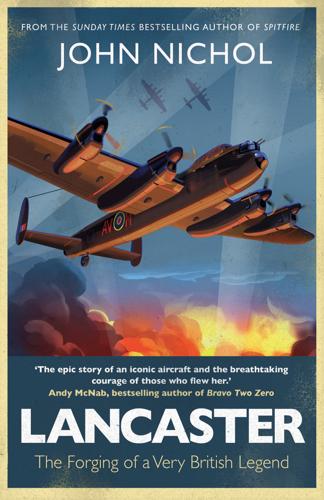
Lancaster
by
John Nichol
Published 27 May 2020
One went so far as to say how surprised he was that they’d heard no explosions, and that the attack on London hadn’t yet commenced.2 The conversation not only confirmed the validity of the Oslo Report, now hastily resurrected, but the other pieces of information that had dribbled in since – the enemy had been quietly developing what came to be known as ‘V’ or ‘vengeance weapons’: the V1 flying bomb, which would fall to earth and detonate when its fuel ran out; the V2 rocket, which could reach targets many hundreds of miles away; and the V3 supergun, which would be able to bombard southern England from positions dug into the cliffs of northern France. Tucked away in that nondescript fishing village in northern Germany was part of the development programme that would lead to the V2 – a weapon like nothing seen before: a long-range ballistic missile, nearly 46ft high and 5.5ft wide, carrying a 27,600lb warhead.
…
Battle-hardened German troops would soon make a comprehensive stand in north-western Europe over the bitter midwinter, launching a month-long counteroffensive – the Battle of the Bulge – which brought the Allied advance to an unexpected standstill. Their new jet fighters were making the first forays into battle, and although the threat from V1 ‘Doodlebugs’ had disappeared as Allied land forces overran the launch sites, the more terrifying V2 rockets were still targeting south-east England, killing and maiming thousands. After five final training flights on their new squadron, Ron Needle, Harry Stunell and Ken Darke were ready to take their own war to the enemy by mid-November. Their first few ops were relatively uneventful, but then they ran into their first German fighter: a solitary JU88 over the railway yards in Heilbronn, north of Stuttgart.
…
Flying low at 200mph to avoid radar and fighters, he and his crew were suddenly aware of an eerie sight. ‘A call from Jim in the rear turret made me look back over the top of our Lanc in time to see a bright, luminous vapour trail rising up and arching high into the sky over our heads. Higher and higher it went, until eventually lost to my sight. It was a V2 rocket on its way to London – the first of several I would see.’20 It hardly seemed possible to Ted that only nine years earlier, as a schoolboy, he’d been so impressed by his very first sight of an aeroplane of any kind. Now, rockets were bringing death and destruction to Antwerp, Paris, London and Maastricht.
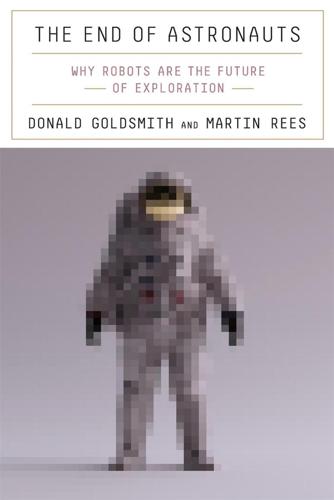
The End of Astronauts: Why Robots Are the Future of Exploration
by
Donald Goldsmith
and
Martin Rees
Published 18 Apr 2022
We must remain mindful of the huge spans of time lying ahead, when our descendants, whether human or post-human, will surely witness ever more amazing ventures. To quote the author and visionary H. G. Wells, “The past is the beginning of the beginning, and all that has been is but the twilight of the dawn.”3 APPENDIX Timeline of Key Events in Space Exploration June 20, 1944 German V2 rocket makes the first journey into space, defined as reaching altitudes above 100 kilometers (62 miles). 1945–1952 V2 rockets used in test flights in Britain, the Soviet Union, and the United States (White Sands Proving Ground, New Mexico). 1952–1958 Redstone rockets, the first large US ballistic missiles, are developed and deployed under the leadership of German rocket scientists brought to the United States, with launches from the White Sands Proving Ground.

Fully Automated Luxury Communism
by
Aaron Bastani
Published 10 Jun 2019
While space transportation might feel like the cutting edge of technology, no rocket has yet surpassed NASA’s Saturn V – first launched in 1967. To this day it remains the tallest, heaviest, most powerful vehicle ever built. Its design and construction were overseen by Wernher von Braun, the engineer behind Nazi Germany’s V2 rocket – the first man-made object to reach space. In the fifty years since, we have yet to see a more impressive machine than one whose construction was led by a man born before a plane even crossed the Atlantic. In order to send humans to Mars, Musk’s SpaceX will have to deliver precisely that. Enter the BFR – short for ‘big fucking rocket’ – the intended successor to SpaceX’s Falcon 9 and Falcon Heavy boosters.
…
Yet that is in keeping with market fundamentalism and, as Marx writes, the likes of Jain have viewed the bounty of nature as somehow the result of capitalism for centuries: Natural elements entering as agents into production, and which cost nothing … do not enter as components of capital, but as a free gift of Nature to capital, that is, as a free gift of Nature’s productive power to labour, which, however, appears as the productiveness of capital, as all other productivity does under the capitalist mode of production. To repurpose the phrase from capitalist realism: is it easier to imagine the end of the world than public ownership of the immense wealth beyond it? Why should it be? For the first sixty years of space exploration, every significant breakthrough was achieved by nation-states. From von Braun’s V2 rockets to the USSR’s Sputnik and NASA’s iconic Apollo missions, private investment had no influence in any of these technological developments. As a result, there is an overwhelming case for space to indeed be the province of all. The technologies which are set to bring its abundance within reach were funded by ordinary people – not wealthy investors.

The Rough Guide to Poland
by
Rough Guides
Published 18 Sep 2018
You can peek into the grim cells and read the stories of the inmates, the atmosphere of dread enhanced by atmospheric lighting and sound effects such as dripping water, screams and the percussive chak-chak of an interrogator’s typewriter. One of the many resistance heroes who passed through here before being transferred to Pawiak to be further tortured and ultimately murdered was Antoni Kocjan, who discovered evidence of the German V2 rocket programme and fed the British with the information they needed to bomb factories and launch sites. Łazienki Park Entrance on al. Ujazdowskie • Daily 8am–sunset • Bus #116, #180 or #E2 from Krakowskie Przedmieście Arguably Warsaw’s most luxuriant public space, Łazienki Park (Park Łazienkowski) stretches for 2km alongside the southbound aleja Ujazdowskie.
…
Walim Drifts: Rzeczka complex ul. 3-ego Maja 26, Walim • May–Sept Mon–Fri 9am–6pm, Sat & Sun 9am–7pm; Oct–April Mon–Fri 9am–5pm, Sat & Sun 9am–6pm • 15zł • 74 845 7300, sztolnie.pl On the other side of the mountain near WALIM is the smaller Walim Drifts: Rzeczka complex (Sztolnie Walimskie: Kompleks Rzeczka). The “drifts” are three parallel sloping shafts that lead into the hillside, towards large rock-hewn factory halls where slave-workers laboured – and frequently died. There’s a model of a V2 rocket outside the entrance and a V1 inside, symbolizing one of the possible purposes of the Riese complex: a secret construction site for high-technology terror weapons. ARRIVAL AND INFORMATION RIESE UNDERGROUND COMPLEX By bus and train You can get to Głuszyca (for Osówka) from Wałbrzych by bus (10 daily; 35min) or train (from Wałbrzych Główny; 4 daily; 15min).
…
Abandoned to the elements by its original human inhabitants, the expanse of shifting, undulating sand provided an ideal training ground during World War II for units of the Afrika Korps, who drilled here in preparation for the rigours of Rommel’s North African campaigns. In the latter stages of the war the spit west of Łeba was turned into a rocket research station; the missiles tested here were distant cousins of the fearsome V1 and V2 rockets that later bombarded London. The eastern entrance to the park is at Rąbka, a small cluster of houses and snack bars on the shores of Lake Łebsko, 1.5km west of Łeba. To get there on foot from Łeba, head down ulica Turystyczna and take the signed left turn about 400m beyond the canal; from here, it’s a 1.5km walk through the birch trees.

Augmented: Life in the Smart Lane
by
Brett King
Published 5 May 2016
His letter to FDR can be seen below: Figure 1.6: Einstein’s letter to FDR on nuclear weapons (Source: National Archives) While this line of research led to the birth of nuclear energy, it also—as Einstein postulated—led to the instigation of the Manhattan Project in 1942. The deployment of nuclear weapons became inextricably linked to advancements in rocket technology. The V2 rocket (the Vergeltungswaffe 2 in German, or “Retribution Weapon 2”) was one of the most devastating long-range weapons of World War II. Hitler’s forces successfully fired 3,000 of these weapons at London and its surrounds, Antwerp and Liège. The V2 was not the only advanced weaponry that the Nazis developed, but it was probably the most successful.
…
At the end of the war, both the Union of Soviet Socialist Republics (USSR)16 and the United States rushed to gather as much intelligence on German weaponry research as possible. In the final days leading to the collapse of the German army, there was an all-out effort by both Soviet and US forces to capture any of the rocket scientists who had worked on the V2 rocket and other such efforts. Ultimately, captured scientists were given the option to emigrate and work on US and Soviet rocket programmes or face life imprisonment. One of the leading rocket scientists working on the V2 programme was a German aerospace engineer named Wernher Magnus Maximilian Freiherr von Braun, or simply Wernher von Braun.

Marx at the Arcade: Consoles, Controllers, and Class Struggle
by
Jamie Woodcock
Published 17 Jun 2019
To create his vision of the game, Spielberg employed Dale Dye, a former US Marine officer who had become a military advisor to Hollywood. Of the game that emerged, a reviewer wrote, “Not just a shoot ’em up, it offers miniature history lessons while you play, offering background on everything from the OSS to the Gestapo to V2 rockets while nostalgic art and video clips convey a sense of the period.” As such, the “original Medal of Honor remains arguably the most educational FPS ever made.”12 However, in a sign of the future controversies over videogame violence, following the Columbine massacre the game also went through last-minute changes, in which all blood and gore was removed.13 Continuing the Second World War theme, the Battlefield series started with Battlefield 1942 in 2002.

The Library: A Fragile History
by
Arthur Der Weduwen
and
Andrew Pettegree
Published 14 Oct 2021
Here three users browse among the ruin, in what was an officially circulated propaganda photo, encapsulating the sang froid of the home front. As the tide turned against Germany after Stalingrad, 1943 offered something of a respite on the home front, before a new wave of bombing with V1 self-propelled bombs (prototype drones) and especially the potent V2 rockets launched in September 1944. More than 1,400 V2 rockets were launched against London before March 1945, causing 2,000 civilian casualties and a new wave of destroyed libraries. Many of the bombs aimed at London fell short, leading to heavy destruction in Kent and south London. The libraries in Streatham, Kingston-upon-Thames and Croydon all suffered devastating raids, this phase of the conflict collectively costing England’s public libraries somewhere over 2 million books.22 The success of the V2, enormously corrosive of civilian morale at a time when many were daring to hope for a return to peace, goes some way towards appreciating the importance attached by the British high command to attacks on German institutes of technology and their library resources.
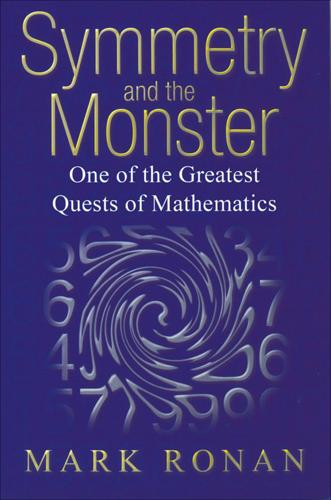
Symmetry and the Monster
by
Ronan, Mark
Published 14 Sep 2006
This was sophisticated mathematics – it used differential equations, and had to take into account the change of air pressure with altitude. He was a fantastic mathematics teacher, and when I went to Frankfurt University I had no need to attend any of the lectures on differential equations. Germany was a leader in rocket science, producing the V2 rocket during the later stages of the Second World War. Fischer’s teacher was not a rocket scientist but a mathematician, and his way of using mathematics to deal with physical problems inspired Fischer, who went to university intending to take a master’s degree in physics, and then do a PhD in mathematics.
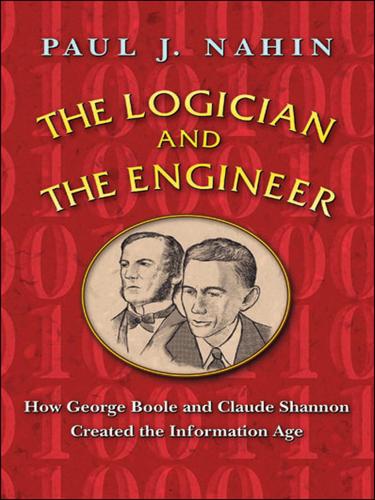
The Logician and the Engineer: How George Boole and Claude Shannon Created the Information Age
by
Paul J. Nahin
Published 27 Oct 2012
There he would enjoy an astonishingly creative fifteen years, including the production of his masterpiece—what Scientific American called “the Magna Carta of the information age”—the 1948 “A Mathematical Theory of Communication.” Initially his work at Bell Labs dealt with anti-aircraft fire-control systems, the need for which had grown in importance with the appearance of the 400 mph German pulse-jet V1 “flying robot bomb,” the world’s first cruise missile. (The German V2 rocket—the world’s first ballistic missile—is also often lumped in with the V1 as driving fire-control system development during Shannon’s day, but it would be quite difficult to shoot down a V2 today, during its 2,000 mph terminal atmospheric reentry phase, much less with 1940s gun technology!) Later work at Bell Labs took Shannon into the arcane world of cryptography, during which he met the English mathematician Alan Turing (1912–1954), who was a key player in the supersecret British Ultra program (“Ultra” was the code-name for the intelligence obtained from intercepted messages sent by German Enigma coding machines that the Nazis incorrectly thought unbreakable).

Valley of Genius: The Uncensored History of Silicon Valley (As Told by the Hackers, Founders, and Freaks Who Made It Boom)
by
Adam Fisher
Published 9 Jul 2018
Max Kelly: The SRL guys had a studio down in Bayview, which at the time was not the place to be. We’d regularly find cars on fire, and people would run up and try to carjack you all the time. The thing was you could do whatever you wanted down there and no one would give a shit. And these crazy white guys are sticking a rocket engine—a V2 rocket engine—out the side of their garage and turning it on. Test firing! A V2 rocket engine! Okay, it might have been a V1, but it was definitely an old Nazi rocket engine. Dan Kottke: It was a jet engine, running on kerosene. They had it on a sled, and they would fire it up. And it was very, very loud and exciting. I used to go to those SRL events.
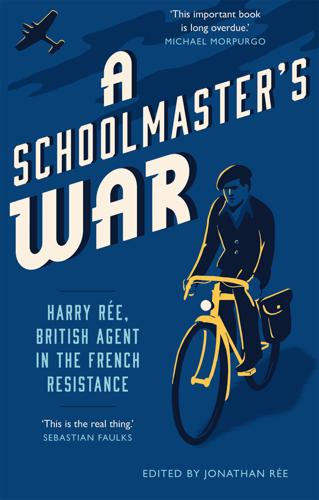
A Schoolmaster's War
by
Jonathan Ree
Fouillette, Roger (‘Brazza’, 1905–1979): born in Paris to a mother from Alsace and a father from the Vosges, who then moved to Montbéliard to work as an engineer for a Peugeot plant at Valentigney; Roger trained as an elementary schoolmaster and was deployed to Alsace in 1927 to restore the use of the French language in a region dominated by German and Alsatian; he quickly married Marie Jund, daughter of a local butcher, with whom he had a daughter and a son, Colette and Raymond; in September 1939 he was drafted into the French army, serving as a lieutenant in command of a casemate on the Maginot Line overlooking the Rhine; he was captured in June 1940 and held as POW for several months; his father persuaded his employer Rodolphe Peugeot (a childhood friend of Roger) to certify (falsely) that Roger was an important engineer, and around November he was released and sent to Audincourt, Montbéliard where he resumed his profession as a schoolmaster; in April 1943 he became leader of OCM and head of FFI in Montbéliard, working closely with HR until he was arrested, 27 October 1943, after which he was detained in the Butte at Besançon, deported 27 January 1944; in Buchenwald his knowledge of German afforded him some protection and in February he was transferred to the secret Dora subcamp, spending eight months in a subterranean factory where the V2 rocket was being developed; as American forces approached in April 1945 he was sent on a ‘death march’ to Ravensbrück, and liberated by Russian troops on 3 May; he reached Montbéliard three weeks later to find that his wife and children had moved to Nantua; Rodolphe Peugeot lent him a car, and he was reunited with them on 26 May, and they all returned to Alsace on Bastille Day, 14 July 1945.

I Hate the Internet: A Novel
by
Jarett Kobek
Published 3 Nov 2016
It was built as a weapon against the Soviet Union. To think that a government which had created a tool wouldn’t use that tool to perform the basic task of every government, which is to say exert control over the lives of its citizens, was a bit strange. It was an expectation akin to running beneath Wernher von Braun’s V2 rockets and hoping you’d be showered with flowers rather than death. Snowden gathered up an unfathomable number of documents circulating inside the NSA. These documents bore evidence of the NSA’s systems of global surveillance. These systems had been constructed with help from companies like Google, Facebook and Apple.

Germany Travel Guide
by
Lonely Planet
Berchtesgaden Learn how this breathtaking Alpine town became Hitler’s southern headquarters at the Dokumentation Obersalzberg, then exorcise Nazi ghosts on the trip up to the ‘Eagle’s Nest’ (Click here) Concentration Camps The darkest side of WWII is commemorated in camps at Bergen-Belsen (Click here), Buchenwald (Click here), Dachau (Click here), Mittelbau Dora (Click here) and Sachsenhausen (Click here) Remagen The pivotal capture of the Bridge at Remagen by American troops in March 1945 is poignantly remembered in the Friedensmuseum (Click here) Peenemünde The deadly V2 rocket was developed in a research facility on Usedom Island, now the Historisch-Technisches Informationszentrum (Click here) Nuremberg See the site of Nazi mass rallies at the Reichsparteitagsgelände, then visit the courtroom where the Nuremberg Trials took place (Click here) Laboe In this town on Kiel Firth, you can clamber around WWII-era U-Boat 995, which is similar to the one featured in the 1981 movie Das Boot (Click here) Jewish Sites Jewish history in Germany is often equated with the Holocaust, but even the Nazis could not wipe out 1600 years of Jewish life and cultural contributions to this country.
…
Exhibits in the Libeskind wedge zero in on such socio-cultural aspects as women in the war, animals in the war, war-themed toys, the economy of war and the suffering brought on by war. The historical wing presents a chronology of German wars from the Middle Ages to the 20th century. Standouts among the countless intriguing objects are a 1975 Soyuz landing capsule, a V2 rocket and personal items of concentration camp victims. Budget at least two hours to do this amazing museum justice. Kunsthofpassage ARCHITECTURE Offline map Google map (www.kunfsthof-dresden.de; enter from Alaunstrasse 70 or Görlitzer Strasse 23; 24hr) Take a web of grimy courtyards, a load of paint and a bunch of visionary Dresden artists and out comes the Kunsthofpassage, one of the most refreshingly artistic spaces in the Neustadt.
…
Train Frequent trains travel to Quedlinburg (€2.20, 12 minutes) and Wernigerode (change in Halberstadt; €11.10, one hour). Mittelbau Dora From late in 1943, thousands of slave labourers (mostly Russian, French and Polish prisoners of war) toiled under horrific conditions digging tunnels in the chalk hills north of Nordhausen. From a 20km labyrinth of tunnels, they produced the V1 and V2 rockets that rained destruction on London, Antwerp and other cities during the final stages of WWII, when Hitler’s grand plan became to conduct war from production plants below the ground. The camp, called Mittelbau Dora, was created as a satellite of the Buchenwald concentration camp after British bombers destroyed the missile plants in Peenemünde in far northeastern Germany.

The Drunkard's Walk: How Randomness Rules Our Lives
by
Leonard Mlodinow
Published 12 May 2008
But any meaning we assigned them would be misconceived because these data are identical to the earlier set of 200 random Xs and Os, except for the geometric 5-by-40 arrangement and the choice of which letters to put in boldface. This very issue drew much attention toward the end of World War II, when V2 rockets started raining down on London. The rockets were terrifying, traveling at over five times the speed of sound, so that one heard them approach only after they had hit. Newspapers soon published maps of the impact sites, which seemed to reveal not random patterns but purposeful clusters. To some observers the clusters indicated a precision in the control of the rockets’ flight path that, given the distance the rockets had to travel, suggested that German technology was much more advanced than anyone had dreamed possible.
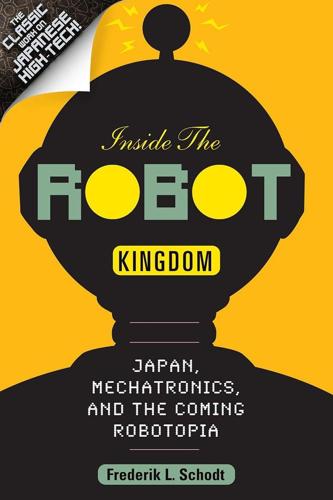
Inside the Robot Kingdom: Japan, Mechatronics and the Coming Robotopia
by
Frederik L. Schodt
Published 31 Mar 1988
Second was the VI and V2 missiles that the German Nazis developed. I had heard that Hitler tried to use them as an ace in the hole to reverse his waning fortunes. The third influence was from the American movie Frankenstein."8 In the story he devised, Iron Man was given the number 28 because, like the VI and V2 rockets, he had originally been designed by the Japanese military as a last-ditch secret weapon to reverse its sinking fortunes. All the models up to No. 28—and the end of the war—were failures, however, so Iron Man No. 28 became a civilian robot. It is hard to imagine a robot more different from the humanistic, family-oriented Atom, but both characters resemble each other in that they were used to help mankind, and both have competed for fans until this day.
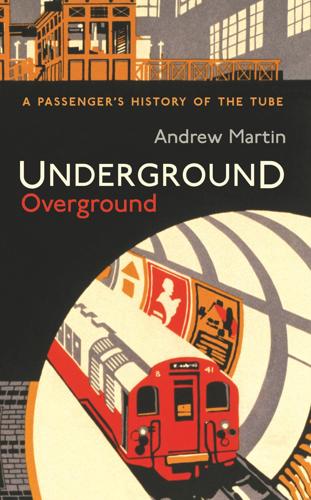
Underground, Overground
by
Andrew Martin
Published 13 Nov 2012
Graves writes: One old woman proudly announced that she had brought enough cheese and tea-cakes for a fortnight, and indeed it was noted that she did not leave the East End railway platform which she had chosen for fourteen days, except to get a ten-minutes breath of fresh air when there was no air-raid in progress. The Tube stations offered warmth, camaraderie. You didn’t pay for light or heat; there were, in fact, few overheads, except the one that really mattered. There were two peaks of sheltering: the first, and highest, was during the Blitz; the second during the rain of V1 and V2 rockets in 1944. A count taken one night early in the Blitz found 177,000 Londoners sheltering in the Tubes. It is said that about 4 per cent of Londoners took to the Tube at some point during the Blitz. You could book your space in advance by acquiring a ticket (no charge was made, of course) that allocated you a space on a platform.

Lonely Planet France
by
Lonely Planet Publications
Published 31 Mar 2013
Just south of town is a protected area of grass-covered dunes known as Dunes de la Slack . LA COUPOLE A top-secret subterranean V2 rocket launch site just five minutes’ flying time from London – almost (but not quite) put into operation in 1944 – now houses La Coupole ( 03 21 12 27 27; www.lacoupole-france.com; adult/child/family incl audioguide €9.50/6.50/24; 9am-6pm Sep-Jun, 10am-7pm Jul & Aug, closed 2 weeks in Dec) , an innovative museum that uses film and images to present information on the following: » Nazi Germany’s secret programs to build V1 and V2 rockets, which could fly at 650km/h and an astounding 5780km/h respectively » Life in northern France during the Nazi occupation » The postwar conquest of space with the help of V2 rocket technology – and seconded V2 engineers La Coupole is 49km southeast of Calais just outside the town of Wizernes, near the intersection of D928 and D210.
…
Wildlife Watch » Vultures in Parc National des Pyrénées » Wolves in Parc National du Mercantour and Parc Animalier des Monts de Guéret » Whistling marmots in Chamonix » Sharks at aquariums in Paris, Monaco, Boulogne-sur-Mer, St-Malo, Brest, La Rochelle, Lyon and Biarritz » Dancing horses in Saumur, Versailles and Chantilly » Bulls and flamingos in the Camargue » Storks and kingfishers at Le Teich Parc Ornithologique, near Arcachon, and Alsace’s Centre de Réintroduction Cigognes et Loutres » Fish (through a snorkelling mask) at the Domaine du Rayol and off island shores (Porquerolles, Port-Cros and Corsica) Rainy Days » Build a house, Bob-style (over threes), Cité des Sciences, Paris » Romp through sewage tunnels with rats, Musée des Égouts de Paris » Create your own perfume at Le Studio des Parfums, Paris » Ride a house-sized, mechanical elephant (any age), Les Machines de l’Île de Nantes, Nantes » Ogle at skulls (teens), Les Catacombes, Paris » Play cave dwellers (any age) in caves riddled with prehistoric art, Vézère Valley » Delve into the depths of the ocean at Cité de l’Océan, Biarritz » Learn all about chocolate at Planète Musée du Chocolat, Biarritz Hi-Tech Experiences » Discover something new with science-experiment workshops (over 10s) at the Palais de la Découverte, Paris » Learn how planes are built (over sixes), Jean Luc Lagardère Airbus factory, Toulouse » Discover V2 rocket technology in a subterranean bunker (teens), La Coupole, St-Omer » Enter wannabe-mechanic heaven (any age), Cité de l’Automobile and Cité du Train, Mulhouse » Meddle in science at Strasbourg’s interactive Le Vaisseau science and technology museum » Spin in a fish on a hi-tech vintage carousel or climb aboard a giant mechanical elephant at Les Machines de I’Île de Nantes, Nantes Hands-On History & Culture » Delve behind the scenes of a world-class art museum with a visit to the restoration and storerooms of the groundbreaking Louvre-Lens, northern France » Pretend you’re back in 1920s Paris: chase vintage sailboats with a stick in Jardin du Luxembourg, just like Parisian kids did a century ago » Relive the battle between Julius Caesar and Vercingétorix at Alésia in 52 BC, with reconstructed Roman fortification lines et al, at Burgundy’s first-class MuséoParc Alésia » Become acquainted with the fine art of perfumerie in Grasse (perfume studios, museum, workshops) and nearby Mouans-Sartoux (flower gardens) » Play medieval builders at Chantier Médiéval de Guédelon, Burgundy » Go Roman (over fives) at Ludo, Pont du Gard, near Nîmes » Watch Victorian-era machines clatter and clank to turn thread into lace at Calais’ Cité Internationale de la Dentelle et de la Mode » Explore the beachfront site of a derelict dynamite factory in Paulilles, Roussillon WHAT TO PACK Babies & Toddlers » A front or back sling for baby and toddler: France’s cobbled streets, metro stairs and hilltop villages were not built with pushchairs (strollers) in mind.
…
LA COUPOLE A top-secret subterranean V2 rocket launch site just five minutes’ flying time from London – almost (but not quite) put into operation in 1944 – now houses La Coupole ( 03 21 12 27 27; www.lacoupole-france.com; adult/child/family incl audioguide €9.50/6.50/24; 9am-6pm Sep-Jun, 10am-7pm Jul & Aug, closed 2 weeks in Dec) , an innovative museum that uses film and images to present information on the following: » Nazi Germany’s secret programs to build V1 and V2 rockets, which could fly at 650km/h and an astounding 5780km/h respectively » Life in northern France during the Nazi occupation » The postwar conquest of space with the help of V2 rocket technology – and seconded V2 engineers La Coupole is 49km southeast of Calais just outside the town of Wizernes, near the intersection of D928 and D210. From the A26, take exit 3 or 4. The neatly organised Musée 39-45 ( 03 21 87 33 01; www.musee3945.com; adult/child €7.40/5; 10am-6pm, weekends only Mar & Nov, closed Dec-Feb) , at the northern edge of Ambleteuse, features realistic tableaux of WWII military and civilian life, and a 25-minute film. The dashing but wildly impractical French officers’ dress uniforms of 1931 hint at why France fared so badly on the battlefield in 1940.
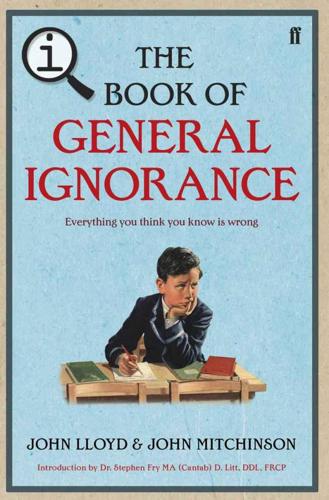
QI: The Book of General Ignorance - The Noticeably Stouter Edition
by
Lloyd, John
and
Mitchinson, John
Published 7 Oct 2010
Nobody really knows where the expression ‘guinea pig’ comes from but the most likely suggestion is that they reached Europe as part of the triangle of slave-trade routes that linked South America to the Guinea coast of West Africa. What was the first animal in space? The fruit fly. The tiny astronauts were loaded on to an American V2 rocket along with some corn seeds, and blasted into space in July 1946. They were used to test the effects of exposure to radiation at high altitudes. Fruit flies are a lab favourite. Three-quarters of known human disease genes have a match in the genetic code of fruit flies. They also go to sleep every night, react in a similar way to general anaesthetics and, best of all, reproduce very quickly.
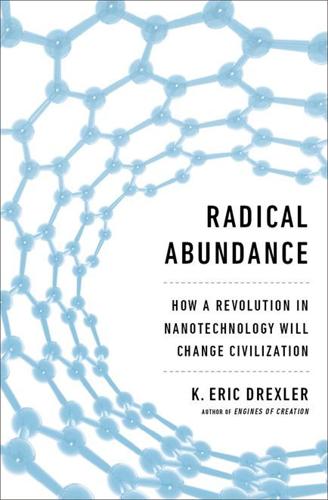
Radical Abundance: How a Revolution in Nanotechnology Will Change Civilization
by
K. Eric Drexler
Published 6 May 2013
A proper history of the origins of spaceflight would note Tsiolkovsky’s limited influence outside Russia and the later, independent roles of Robert Goddard in the United States and Hermann Oberth in Germany with their concrete technical contributions: building actual, physical, liquid-fuel rockets. The history then would tell of the rise of rocketry on the tides of war, led by visionaries sharing Tsiolkovsky’s dream of the conquest of space. The leading example was Werner von Braun, the German scientist who led the German V2 rocket project that rained bombs on London from the edge of space, envisioned a detailed plan for interplanetary exploration (Das Marsprojekt, published as The Mars Project in 1953), was ordered to refrain from launching a satellite for the United States in 1956, and at last led the team that developed the Saturn V boosters that launched men to the Moon.

Empire of the Sum: The Rise and Reign of the Pocket Calculator
by
Keith Houston
Published 22 Aug 2023
One was imprisoned, the other executed, and, when Herzstark protested to the Gestapo, he was arrested for his trouble. In short order, he was sent to prison and then on to Buchenwald, the first and largest of Nazi Germany’s network of concentration camps.38 As a skilled engineer, Herzstark was offered a second Faustian bargain. In exchange for supervising a cadre of inmates who fabricated components for V2 rockets and repaired looted calculating machines, he would be allowed to live. He used his position to mastermind a number of small rebellions, requesting the transfer of vulnerable prisoners into the camp’s machine shop and teaching them how to look useful should an SS guard pass by.39 Even in such precarious circumstances, with bombing raids and executions mere facts of life, Herzstark could not contain his enthusiasm for his miniature arithmometer.

Boom: Bubbles and the End of Stagnation
by
Byrne Hobart
and
Tobias Huber
Published 29 Oct 2024
For his part, von Braun strongly preferred the Americans to the Soviets, and arranged his surrender accordingly. (Years later, the moral complexity of Operation Paperclip would come into sharp relief when respected NASA scientist Arthur Rudolph resigned from the agency, renounced his US citizenship, and left the country after it emerged that he had used slave labor to produce V2 rockets. 184) By the time Kennedy announced the plan to go to the Moon, von Braun had been waiting for such an opportunity for three decades and was ready to pounce. This is one of the hidden benefits of projects marked by extreme ambition: They attract the most dedicated, focused people. The early days of NASA benefited from a similar level of focused ambition.
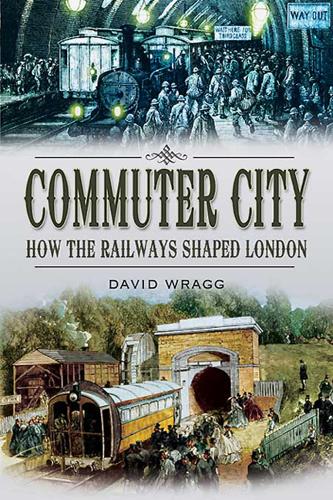
Commuter City: How the Railways Shaped London
by
David Wragg
Published 14 Apr 2010
At Chiselhurst in Kent, the caves provided a natural air raid shelter, and many people would ‘commute’ by train to Chislehurst each evening to seek shelter in the caves. This was just one example, but Paddington was amongst those termini seeing ‘reverse commuting’ in wartime, first at the height of the Blitz and then during the period of V1 and V2 rocket attacks. Shortages of skilled staff in the workshops and the conversion of many of these to war production, as well as shortages of materials, meant that the intervals between routine overhauls were extended. Economy measures on the Great Western were typical and included a new colour scheme for passenger carriages of reddish-brown with a bronze waistline and black roof, while locomotives were painted plain green without any lining out on being sent for overhaul or repair.
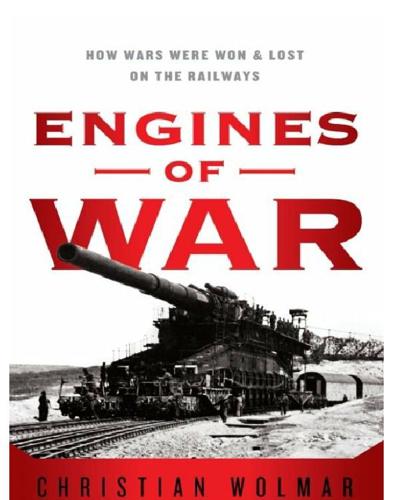
Engines of War: How Wars Were Won & Lost on the Railways
by
Christian Wolmar
Published 1 Nov 2011
In Britain, the War Department built and owned over a thousand ‘Austerity’ locos and a clutch of shunting locomotives, many of which were transferred to British Railways in the 1950s, but, as with the German war locomotives, others ended up all over the world. Hitler liked technology and expended much effort, fruitless as it turned out, on developing the V1 and V2 rockets that were launched towards Britain in the final stages of the war, but he was also obsessed with producing guns that could destroy enemy positions from a great distance. Inevitably, these had to be rail-mounted and in 1941 Germany constructed two enormous 800mm guns intended for use against Gibraltar, but Franco would not allow them to cross Spanish territory.
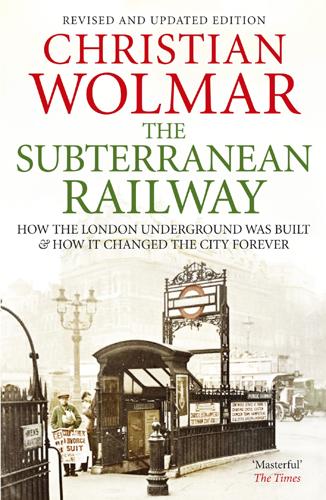
The Subterranean Railway: How the London Underground Was Built and How It Changed the City Forever
by
Christian Wolmar
Published 30 Sep 2009
There were, too, various redundant or partly built sections of the Underground which had been turned over to the shelterers with official blessing, such as the disused stations at South Kentish Town, British Museum and City Road, and the unfinished section of lines at Bethnal Green, the largest in the capital with accommodation for 5,000, and Highgate. The deep shelters announced by Morrison were not available for use during the Blitz of 1940–41 and they were kept in reserve, as numbers in the shelters dwindled during the subsequent lull. Five of them finally found use as shelters briefly in the summer of 1944 during the assault by V1 and V2 rockets, but in terms of protection from the bombs they were too little, too late. They were later used to house returning evacuees made homeless by the bombing. The elite of shelters was probably Aldwych. The whole little-used branch line to Holborn was given over for the use of thousands of shelterers soon after the onset of the Blitz, by Lord Ashfield.
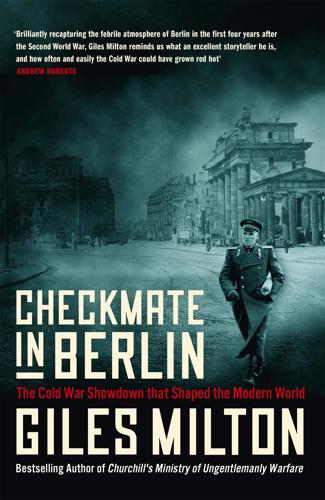
Checkmate in Berlin: The Cold War Showdown That Shaped the Modern World
by
Giles Milton
Published 26 May 2021
In ‘Special Intelligence Report 3’, covering the early weeks of that year, he revealed that ‘in each factory we have an agent of whose reliability we are certain … [and] within the next months it will be possible to present a picture which will substantially cover the activities in Russian-occupied Germany.’ This proved to be the case. At a specialist colour-processing plant run by the photographic company, AGFA, forty miles from Berlin, Parkin’s undercover agent was a certain Dr Ziegler. He reported on everyone who might be of value to Britain. At the V2 rocket plant in Sömmerda, the insider information came from one E. H. Schön, ‘a very valuable agent’, said Parkin, who revealed that many of the factory’s specialists were keen to flee the Soviet yoke. ‘There has been for some time a concerted determination to work for the western democracies.’ This intelligence work carried substantial risks.
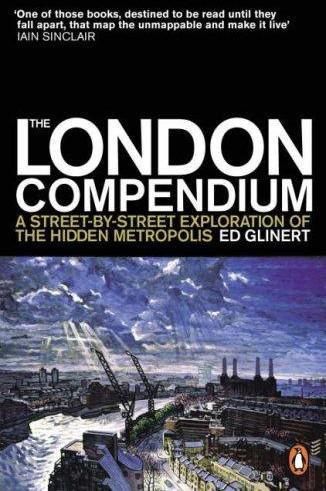
The London Compendium
by
Ed Glinert
Published 30 Jun 2004
Nevertheless, the two companies formed a partnership in 1899, but it was not until the arrival of Southern Railway in the 1920s that the wall between the two stations was removed. VICTORIA LINE The Victoria Line, which opened in 1968 as London’s first new tube line since 1907, owes its existence more to civil defence needs than transport requirements, dating back to government concerns in 1944 about German A-bomb-tipped V2 rockets dropping on London. This led the authorities to construct a number of bomb-proof tunnels that could take cables between strategically important buildings: Buckingham Palace; the Curzon Street bunker in Mayfair where the royal family took shelter during the war, later used by MI5; BBC Broadcasting House; the Museum Telephone Exchange, which was also home of the BBC’s national distribution centre, on Maple Street, Fitzrovia (where Telecom Tower now stands); and the railway termini of Euston, St Pancras and King’s Cross.
…
‘The Cage’, No. 8 Built by Owen Jones in the 1850s, and later owned by the art collector Lord Duveen of Millbank, who also had a suite at Claridge’s, No. 8 was used during the Second World War as the headquarters of the War Crimes Investigation Unit interrogation centre known as ‘The Cage’, where German prisoners of war who had been close to the upper echelons of the Nazi Party, or those who had specialist knowledge of the V1 and V2 rockets that were bombarding London, were questioned. The prisoners, whose number included a small proportion of stool pigeons, usually German or Austrian Jews, who, it was hoped, would be accepted as genuine Nazis, were kept in cells with floors of solid concrete and windows covered with barbed wire. There were no furnishings that could be used by a prisoner to hang himself, and each cell door had a ‘Judas hole’ to enable the guards, who moved noiselessly around the complex, to spy on the inmates without being heard or seen.
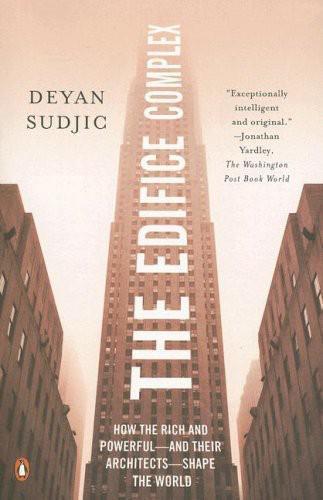
The Edifice Complex: How the Rich and Powerful--And Their Architects--Shape the World
by
Deyan Sudjic
Published 27 Nov 2006
Leon Krier, the architect best known for his role in planning Seaside, the outpost of New Urbanism on the Florida panhandle, and the Prince of Wales’s village of Poundbury, has been the most active voice in attempting to rehabilitate Speer. Why, he wondered, was it considered necessary to destroy the inoffensive street lights that Hitler’s architect had designed for Berlin? Why, Krier asked, did Speer end up as Spandau’s penultimate prisoner? Long after Werner von Braun, who devised the highly destructive V2 rockets that were built using slave labour and which killed so many Londoners, had bypassed the prisoner-of-war camps and flown to the USA to build the arsenal of democracy, Speer was still in jail. Could architecture actually be regarded as a weapon of war like a V2? Perhaps the answer lies in the way that we tend to blame the architect more than the engineer – because he envisaged the shape of a totalitarian state.
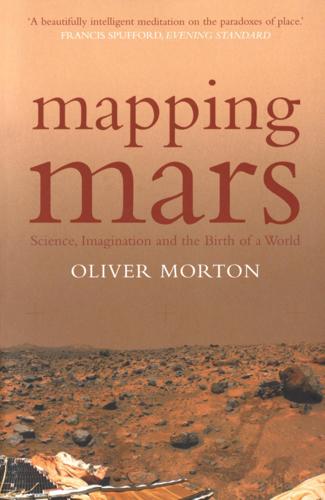
Mapping Mars: Science, Imagination and the Birth of a World
by
Oliver Morton
Published 15 Feb 2003
He discovered that he loved the landscapes of the Southwest. He loved the pines, he loved the open spaces, and he loved the great, vaulting skies. He stared up at the desert moon with wonder. In the field, he did not have much contact with the rest of the world. But he did get the Caltech alumni newspaper, which revealed that experiments with captured V2 rockets elsewhere in New Mexico were reaching the very edge of the atmosphere. It was a revelation. “Why, we’re going to explore space,” he later remembered thinking, “and I want to be part of it! The moon is made of rock, so geologists are the logical ones to go there—me, for example.” Shoemaker kept his wild dream to himself—a decade before Sputnik there was little call for space-age geology.

More: The 10,000-Year Rise of the World Economy
by
Philip Coggan
Published 6 Feb 2020
Source: https://www.wttc.org/-/media/files/reports/economic-impact-research/2017-documents/global-economic-impact-and-issues-2017.pdf Chapter 12 – From the wonder years to the malaise: 1945–1979 1. Quoted in Armand van Dormael, Bretton Woods: Birth of a Monetary System 2. Frieden, Global Capitalism, op. cit. 3. Von Braun was the man behind the V1 and V2 rockets that fell on London. He subsequently became part of the US space programme. As Tom Lehrer sang, “Once the rockets are up, who cares where they come down?/That’s not my department, says Wernher von Braun”. 4. Stephen D. King, Grave New World: The End of Globalisation, The Return of History 5. David Pilling, Bending Adversity: Japan and the Art of Survival 6.
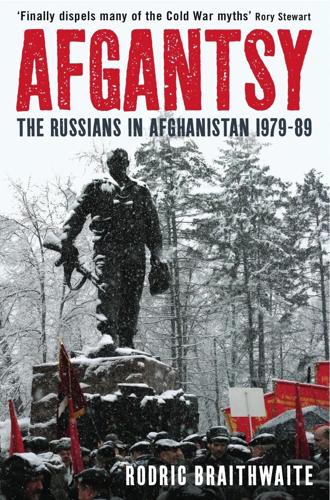
Afgantsy: The Russians in Afghanistan, 1979-89
by
Rodric Braithwaite
Published 15 Jan 2011
Gorbachev called an emergency meeting on 10 March to consider the request. It was rejected.8 But further attacks were broken up by the government’s own aircraft and by April the government troops were on the offensive. They bombarded the mujahedin with over four hundred Scud missiles developed from the Germans’ wartime V2 rockets and fired by the Soviet crews who had remained behind. Like the V2, you got no warning of the Scud’s arrival until it had exploded. ‘The mujahedin, who, one would have thought, were already inured to the use in their homeland of every kind of weapon,’ wrote Greshnov, who visited Jalalabad at the time, ‘…were psychologically unable to cope when these rockets were employed against them … Losses among the civilian population could be counted in thousands, and the battle itself acquired such a massive and brutal character that it could be compared in military terms perhaps only with the battle for Stalingrad.’9 The soldiers cleared the road from Kabul – the old ‘English’ road, along which the Army of the Indus had retreated in 1842 – and relieved the city.

France (Lonely Planet, 8th Edition)
by
Nicola Williams
Published 14 Oct 2010
Return to beginning of chapter LA COUPOLE A top-secret subterranean V2 launch site just five minutes’ flying time from London – almost (but not quite) put into operation in 1944 – now houses La Coupole ( 03 21 12 27 27; www.lacoupole.com; adult/student/5-16yr/family incl audioguide €9/7.50/6/19.50; 9am-6pm, to 7pm Jul & Aug, closed 2 weeks from Christmas), an innovative museum that uses lots of moving images to present Nazi Germany’s secret programs to build V1 and V2 rockets (which could fly at 650km/h and an astounding 5780km/h respectively); life in northern France during the Nazi occupation; and the postwar conquest of space with the help of V2 rocket technology – and seconded V2 engineers. La Coupole is 5km south of St-Omer (the circuitous route is signposted, but confusing), just outside the town of Wizernes, near the intersection of the D928 and the D210.
…
This tour ventures out of the ordinary into France’s quirkiest sights and sounds – and smells, in the case of the Paris sewer where it starts. Gawp at more skulls than you can imagine in the capital’s catacombs, then venture north to the spot near Compiègne, where WWI officially ended. Top off your day with a subterranean dose of V2 rocket technology in a bunker near St-Omer. A few drops of Christ’s blood in Fécamp on the Normandy coast inspired monks to concoct Benedictine liqueur: visit the Palais Bénédictine and get a free shot – then tell yourself you’re not drunk as you tour the ‘laboratory of emotions’ in Honfleur’s wacky Les Maisons Satie.
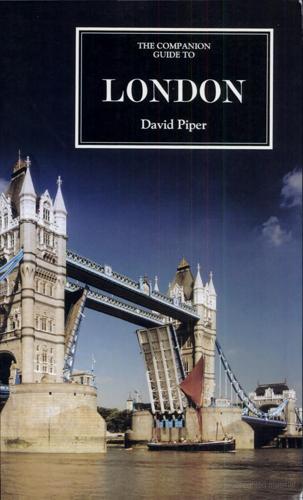
The Companion Guide to London
by
David Piper
and
Fionnuala Jervis
Published 2 Jan 1970
Eastwards, the grounds of the Hospital join on the wooded, nooked and delled Ranelagh Gardens, where not a trace remains of the apparatus of pleasure which made Ranelagh famous as a centre of entertainment between 1733 and 1805, when for years at a stretch it was visited by almost anybody who was anybody, from Dr Johnson downwards; it saw concerts (including the infant prodigy Mozart, aged eight, in 1764), masquerades that were forerunners of the Chelsea Arts Balls, fireworks, balloon launchings and other galas. Its focus was a famous building, the Rotunda, which can still be seen in Canaletto’s painting of it in the National Gallery. The Hospital suffered in both wars, and in the second war lost to a V2 rocket notably the Infirmary (where once Robert Walpole’s house had stood). A splendid supplement stands nearby: the National Army Museum. Moved to Chelsea from Sandhurst, it recounts the history of the British Army from the Battle of Agincourt up to the present day. The collection consists of relics, uniform and insignia of the army, as well as a number of fine paintings.
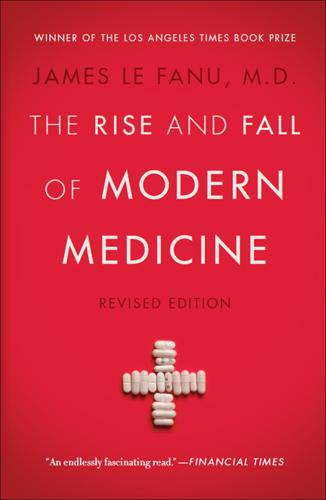
The Rise and Fall of Modern Medicine
by
M. D. James le Fanu M. D.
Published 1 Jan 1999
By contrast, the MAOIs arose – like chlorpromazine – from a chance felicitous clinical observation that a drug used in the treatment of one condition, in this case tuberculosis, had side-effects that might be put to good use in another. In 1944 the Germans had used a new type of fuel – hydrazine – to propel their V2 rockets over southern England. Come the end of the war hydrazine thus became available relatively cheaply, so pharmaceutical companies bought it up to use as a starting material for investigation of its possible therapeutic properties, even though it was not an easy compound to work with, being flammable, caustic, extremely poisonous and explosive.
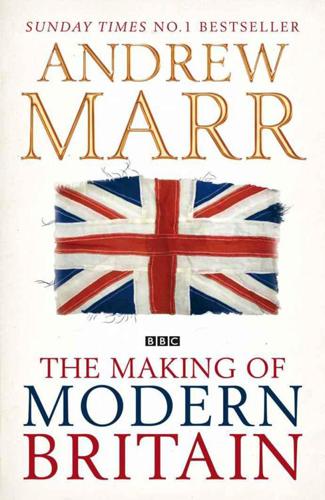
The Making of Modern Britain
by
Andrew Marr
Published 16 May 2007
More than 2,000 fires were started and 3,200 people were killed or injured. Many roads and most railway lines were blocked and the firefighters were struggling to put out fires for eleven days. After it was over, London was changed for ever; yet the city would go through a second wave of attacks in 1944 when first the ‘Doodlebug’ flying bombs and then the V2 rockets, harbingers of the post-war age, rained down, killing between them another 8,000 people. Croydon, once a beautiful market town, now a concrete metropolis, was particularly badly hit. Though London took the worst, it is not clear whether it suffered more proportionally than other blitzed cities.
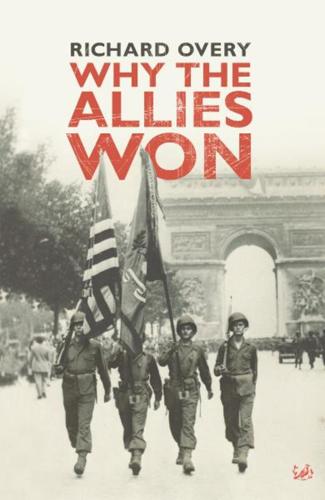
Why the Allies Won
by
Richard Overy
Published 29 Feb 2012
.: 1941 pessimism, 18; and air power, 276; at Atlantic conference (1941), 30–2; background and character, 318–21, 353; and bombing, 133–4, 141–2; and Britain, 305; call for Axis unconditional surrender, 362–3; at Casablanca (1943), 142–3, 169, 363; and Churchill, 22, 32, 132, 306, 312; death, 322–3, 343–4; Germanophobia, 134, 353–4; and Hitler, 28, 352, 353, 355; Hitler’s reaction to death, 343–4; and inevitability of war, 35; and invasion of France (1944), 169, 172, 175–6, 183; on Liberty Ships, 237; and Marshall, 322, 334, 336; Pacific strategy, 41; and Pearl Harbor (1941), 39; at Quebec (1943), 172; and religion, 349; role in war’s outcome, 26, 313, 318–23; and Second Front, 310, 335; and Soviet Union, 307–9, 310, 312, 365; and Stalin, 312; at Teheran (1943), 119, 175–6, 300–3, 322; and Torch (1942), 54; on treatment of defeated German leaders, 382; and US entry into war, 304–5, 357; and US production and rearmament, 220, 233, 234, 236, 253, 397; war priorities, 311; and war’s moral issues, 349, 350, 351 Roosevelt, Theodore, 318 Rosenberg, Alfred, 350 Rostov-on-Don, 81, 82–3, 100 Rotmistrov, General Nikolai, 114–16, 260 Rotterdam, 131 Rouen, 140–1 Roundup, Operation (1943), 169 Royal Air Force (RAF): attitude to civilian bombing, 129; Churchill’s early support for, 126; close-support tactics, 276–7; see also Bomber Command Royal Navy: anti-submarine support groups, 69, 70; comparative strength, 33; and D-Day (1944), 179–80, 192, 194, 196, 428–9; invasion of Madagascar (1942), 164–7; losses, 74; and sea war, 35–6, 37–9, 41, 59, 63, 69, 70; ships in commission at end of war, 75 Ruge, Friedrich, 278 Ruhr, 130, 131, 135, 144, 162, 344 Rumyantsev, Operation, 118 Rundstedt, Field Marshal Gerd von, 188, 190–1, 195, 205–6 Russian Civil War (1918–21), 77 Russian Revolution (1917), 8 Rutherford, Ernest, 288 Saffody, Tom, 242 Saigon, 281 St Lô, 255, 275 St Paul’s School, London, 191–2 Saipan, 370 Salmuth, General Hans von, 189 Saratoga, 46 Saudi Arabia, 20 Saur, Karl-Otto, 423 Schlabrendorff, Fabian von, 378 Schweppenburg, General Geyr von, 190, 197 Schweinfurt, air battle of (1943), 148–9 sea war, 30–76: air support, 36–7, 60–1, 68, 69, 70, 71–2, 141, 280–1, 396; Atlantic, 30–9, 54–63, 64–73, 74, 141, 393, 396; Mediterranean, 63–4; oil transports, 280–1, 286; Pacific, 39–53; reasons for Allied success, 393; significance, 21, 22; technological aids, 37, 60–2, 69 searchlights, marine, 61, 69 Sebastopol, 81 Second Front: Allied reluctance to start, 123, 124, 142, 310; bombing’s contribution to, 24–5, 125, 126; see also France, invasion of Second World War see World War II Seine river, 215 Sergei, Metropolitan, 347, 348 Seven Years’ War (1756–63), 344 ships: production statistics, 407; US production, 75, 170, 235, 236–8; see also landing craft Shirer, William, 367 Shoho, 43 Shokaku, 42, 44 Shtemenko, General Sergei, 332 Siberia, 221–2 Simonov, Konstantin, 354 Singapore, 18, 33 Singleton, Judge John, 126 Sledgehammer, Operation (1942), 169 SN2, 144 Solomon Islands, 42, 52 Sorenson, Charles, 240 Soryu, 49, 50–1 Soviet air force, 260–2, 263 Soviet air force units: 5th air army, 108; 8th air army, 93–5 Soviet Union: 1944 offensive, 203; agriculture and food, 223, 229–30, 231; air power, 258, 260–2; attitude to old imperial states, 9; British relations, 107–8, 123–5, 304, 307–12, 437; effects of war on, 388, 397–8; and end of European war, 217; fighting skills, 25, 257, 391; Five-Year Plans, 225, 230; German fear of, 381; German invasion (1941–43) see Barbarossa, Operation; German–Soviet Pact (1939), 3, 14, 15, 282; heavy-bomber development, 127; invasion of Germany (1945), 344; and Japan, 86; material resources, 5; military technology, 6, 258–63, 279, 298–9; and Nuremberg, 383; oil supplies, 282, 283–4, 286–7; patriotism and morale, 26, 82–4, 122–3, 230–2; post-war, 403, 404–6; propaganda, 354, 357–60; punishment of retreaters and deserters, 358; railways, 221, 223; regime as moral issue, 364–5; religion in, 347–8; role in war’s outcome, 1–2, 3, 397–8; supplies to, 22; technical achievement, 6; US economic aid to, 309, 310, 311–12; US relations, 304, 307–12; war casualties, 120; war leadership, 313–18, 332–3; war production, 220–32, 243, 253–4, 407–8; west’s mistrust, 3–4; see also eastern front and Red Army Soviet War News, 365 Spaatz, General Carl, 139, 181–2, 183 Spain, 20 Spanish Civil War (1936–39), 10, 86, 127 Speer, Albert: on Allied bombing campaign, 163; and atomic research, 290; and German production, 153, 160, 250–1, 254; on Hamburg air raid, 146; and Hitler, 343; and Hitler’s death, 216; at Nuremberg, 383; and rockets, 293–4 Spruance, Rear-Admiral Raymond ‘Electric Brain’, 46, 47, 49, 50 SS (Schutzstaffel), 252, 372, 380 Stagg, John, 194 Stalin, Josef: admiration for Hitler, 312; on air power and armour, 257; and Allied bombing, 123–5, 158; and Antonov, 332–3; background and character, 314–15; and Barbarossa, 17, 23, 78, 80, 83, 84, 85, 87, 100–1, 103, 104, 105, 106–7, 111, 307, 315–17; blamed by Hitler for loss of war, 387; and Britain, 123–5, 309, 312; and Churchill, 301–3; confidence in Allied victory, 366; and end of European war, 217; and German rout, 118, 119; and heavy-bomber development, 127; hopes of Allied support, 24; and invasion of France (1944), 124–5, 164, 172, 175–6, 217–18; at Moscow meeting (1942), 124–5; and Nuremberg, 382; on old imperial states, 9; Orwell on, 450; on production’s importance, 253; and propaganda, 347–8, 357–8, 359; public popularity, 359; and religion, 347–8; role in war’s outcome, 26, 313–18; and Roosevelt, 312; and Russian Civil War (1918–21), 77–8; at Teheran (1943), 119, 175–6, 287, 300–3; and US, 309, 312; war priorities, 311; western attitude to, 352–3; on winning wars, 386; and Zhukov, 85, 86, 316 Stalingrad: geography and terrain, 88; pre-war industrial strength, 78; and Russian Civil War (1918–21), 78 Stalingrad, Battle of (1942–43), 78–104, 94, 393 Stauffenberg, Colonel Count Claus Schenk von, 378–80 steel production, 222, 227–8, 232–3 Steinbock, Operation (1943), 144 Stern, James, 161 Stimson, Henry: on air power’s importance, 276; on British and US morale, 172; on German invasion of Soviet Union, 23; and invasion of France (1944), 173, 174; on Roosevelt, 308, 321; and war production, 242, 253 Submarine Tracking Room, 59, 73 submarine war, 35–6, 37–8, 54–63, 64–73; anti-submarine weapons, 37, 60–2, 69; maps of merchant losses, 72 submarine wolf-packs: Dränger, 67–8; PfeW, 66; Raubgraf, 67–8; Stürmer, 67–8 submarines: German numbers and types, 54–6; production statistics, 408; U-384, 68; U-530, 75; U-653, 67; U-954, 70; U-977, 75–6 Suez, 16, 18 Suez Canal, 279 Sumatra, 279 supplies see logistics Surkov, Alexei, 83 Sverdlovsk, 226, 228 Sweden, 20 Sword beach, 192, 197 Syria, 20 Taft, Robert A., 3 Takagi, Rear-Admiral Takao, 42–3, 370 Takata, Rear-Admiral, 390 Tankprom, 225 tanks Allies: numbers, 279 Czech: TNHP-38, 264 on eastern front, 112, 114–16, 258–60, 263, 264–5, 279 German: King Tiger, 267; Mouse, 267; numbers and quality, 258, 263, 264–7, 279; output, 6; Panther, 109, 266–7; Panzer, 264; superiority, 218; Tiger, 109, 266–7 Italian: M11, 270–1;M13, 270 Japanese, 271 production statistics, 408 Rhinoceros, 209, 210 Soviet, 6; IS-2, 260; KV-1, 259–60; numbers, 258, 279; production, 224, 225, 226–7, 228; T-34, 109, 228, 259–60; tank armies, 259–60; types, 226 tactical importance, 257, 258–60, 263, 264–8 US, 274–5; production, 235 Taranto, Battle of (1940), 36–7 technology, 255–99; Allied attitude to sharing, 310; Allied superiority, 6; atomic weapons, 142–3, 154–5, 245, 287–91, 295–7, 364; and bombing campaigns, 138–9, 140, 143–4, 144–5, 146, 147; and eastern front, 6, 258–70; German, 6, 219, 258, 263–70, 275, 278–9, 297–8; German rocket programme, 291–5; and invasion of France (1944), 180–1, 209, 277–9; Italian, 270–1, 275; North Africa, 276–7; oil and substitutes, 279–87; Pacific campaigns, 271–3; and sea war, 37, 60–2, 69; Soviet, 6, 258–63, 279, 298–9; and Stalingrad (1942), 93; US, 272, 273–6, 279; see also radar Tedder, Air Marshal Arthur, 181, 182, 217 Teheran conference (1943), 119, 174–6, 287, 300–3, 317, 322, 326, 328–9 Theophilites, 349 Thompson, Dorothy, 304–5 Tobruk, siege of (1941), 123 Torch landings (1942), 53–4, 64, 124, 177 torpedoes: Japanese, 40–1; US, 45 Torpex explosive, 61 ‘total war’ concept, 243 Toyota, 271 Trenchard, Sir Hugh, 129, 137 Treschkow, General Henning von, 378 Tri-partite Pact (1940), 16 Trade Plot Room, 59, 73 Triton, 57, 67 trucks: German production, 275; Japanese, 271; Lend-Lease, 262–3; tactical importance, 258; US production, 235, 275 Truman, Harry, 154–5, 344, 382, 402 Tulagi, 42 Tupolev, Alexander, 127 Turkey, 20, 328 Twilight of the Gods (Wagner), 343 U-boats see submarines Udet, Colonel-General Ernst, 127, 268–70 Ugaki, Admiral Matome, 39–40, 44, 368, 381 Ukraine, 16, 23, 81, 105, 118, 222 Ultra see Enigma United Nations, 365–6 United States: air power, 397; atomic research, 295–7; attitude to colonialism, 9; Axis opinions of, 390; British relations, 304–7; car industry, 238–9; economic aid to Allies, 236–7, 262–3, 304, 308, 309, 310, 311–12; effects of war on, 397–8; enters war (1941), 17–18, 39, 305, 357; entrepreneurship, 242; fighting skills, 257; food supplies, 241; Germanophobia, 353; invasion of France (1944), 167–216; isolationism, 233, 304–5, 318; Japanophobia, 362; Lend-Lease, 262–3, 304, 308, 309, 310, 311–12; military expenditure, 233, 234; military technology, 272, 273–6, 279; naval power’s importance, 34–5; New Deal, 233, 236, 319; oil supplies, 286–7; post-war, 402–3, 404–6; propaganda, 360–3, 365; psychological disorders in forces, 361; public attitude to Soviet Union, 353; religion in, 349; reluctance to open Second Front, 123, 124; role in war’s outcome, 397–8; Soviet relations, 304, 307–12; war leadership, 318–23, 333–6; war production, 5, 75, 150–1, 170, 222, 232–42, 253–4, 275, 397, 407–8; and World War I, 335 United States air force: 1930s strength, 233; bombing Germany, 127–30, 133–4, 139–44, 147–9, 150–3, 285; bombing Japan, 153–5, 157; close-support tactics, 276–7; and invasion of France (1944), 181–3, 196, 199, 255; and Japanese oil transports, 280–1; military technology, 275–6 United States air force units: 8th air force, 139–44, 147–9, 150–3; 15th air force, 152–3; 20th air force, 154–5; 21st Bomber Command, 154–5 United States army: 1930s strength, 233; comparative strength, 33; divisional numbering system, 186; slowness of moving, 53; supplies, 257 United States army units: 1st army, 192, 196, 197–8, 209; 3rd army, 210, 211, 212–13, 213–14, 215; 4th armored division, 211; 5th corps, 198; 7th cavalry brigade, 274; 7th corps, 203; 8th corps, 203, 211; 12th corps, 215; 82nd airborne division, 192; 101st airborne division, 192, 195 United States navy: Atlantic campaign, 304; comparative strength, 33; funding, 234; and German submarines, 56–7; and naval aviation, 46; Pacific campaigns, 41–53; ships in commission at end of war, 75, 415 Uralmash, 228 Urals industrial area, 221–2, 225–8 Uranus, Operation (1942), 87, 96–7, 99 Utah beach, 192, 196, 197–8 V1 rocket, 293–4 V2 rocket, 292–5 Vandenburg, Arthur, 319 Vansittart, Lord Robert, 354 Vasilevsky, Alexander, 87, 115, 332 vehicles, motor see motorisation; trucks Verlaine, Paul, 191 Vernon, 183 Vietnam, 404 Vishinsky, Andrei, 383 Volga river, 81, 85, 88, 89, 95 Volkswagen, 248–9 Voronezh, 118 Voronov, Marshal Nikolai, 317 Voroshilov, Klement, 316 Voznesensky, Nikolai, 225, 226, 255 Vvedensky, Father, 347 Wagner, Richard, 343 The War in the Air (Wells), 355 War Production Board, 236 Warlimont, General Walter, 337 Wasserfali missile, 295 The Waste Land (Eliot), 356 weapons, personal: Japanese, 272 weapons quality see technology Webb, Beatrice, 351 Webb, Sidney, 351 Wedemeyer, General Albert, 363, 366 Wells, H.G., 127, 355 Werth, Alexander, 83, 102–3 Werwolf summer base, 81 Western Air Plans, 130 Why We Fight documentaries, 363, 365 Wilde Sau tactics, 144 Willow Run, 240–1 Wilson, Woodrow, 320 Winant, John, 38–9 Window radar-jamming device, 145, 146 Winn, Rodger, 59 Wolfsburg, 248–9 The Woman in the Moon (film), 292 World War I (1914–18): Churchill’s role, 25, 31, 126, 324, 328; effect on traditional values, 8; Gallipoli (1915–16), 25, 31, 324; and Germanophobia, 355; Hitler’s service in, 11–12; manpower and resources, 4; US soldiers’ lack of equipment and experience, 335 World War II (1939–45): Allied confidence in victory, 366; and of European, 217; as just war, 26–8, 347–85, 398–9; origins, 8–15; overview, 15–20; popular support for, 26–7; scale, 20–1; total casualties, 29 Yakovlev, Alexander, 220–1 Yamaguchi, Admiral, 51 Yamamoto, Admiral Isoroku, 40, 45, 48, 51, 52 Yamato, 45, 48, 51, 52 Yaroslavsky, Emelian, 347 Yefimov (Russian cartoonist), 123 Yeremenko, General Andrei, 89 Yonai, Mitsumasa, 51 Yorktown, 42, 43, 44, 47, 51 Yoshida, Shigeru, 401 Yugoslavia, 16, 244 Zeitzler, General Kurt, 120, 340–1 Zhukov, General Georgi: and Antonov, 333; background and character, 85–6; and end of European war, 217; and German rout, 118; and invasion of Germany (1945), 344; and Koltso, 100; and Kursk (1943), 104, 107, 111, 115, 116; leadership skills, 316, 332; on reasons for Soviet win, 121; and Stalingrad (1942–43), 85–7, 99 Zuckerman, Solly, 181 Zuikaku, 42, 44
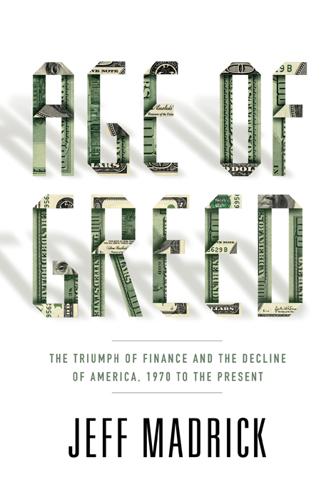
Age of Greed: The Triumph of Finance and the Decline of America, 1970 to the Present
by
Jeff Madrick
Published 11 Jun 2012
“The great achievement of capitalism is not the accumulation of property,” he wrote, “it has been the opportunities it has offered men and women to extend and develop and improve their capacities.” But dozens of events in Friedman’s lifetime showed just the opposite. The martial technology of Germany, including the V2 rockets, were created under the directives of a central government. That most creative and dreadful product made by the human species, the atomic bomb, was the result of a U.S. government directive to J. Robert Oppenheimer and his colleagues. Radar was developed by government. It is now a commonplace that the Internet originated in the Pentagon.

Drink: A Cultural History of Alcohol
by
Iain Gately
Published 30 Jun 2008
In 1942 the Hitler Youth had dug out all the hybrid vines in Alsace, to be replaced with Aryan strains. The luxury of time they had anticipated—a thousand-year Reich—was over three years afterward—too soon for the replacements to come into service. Domestic supplies of drink were further reduced to feed the Nazi war machine. Distilled alcohol was needed for munitions and as fuel, notably for the V2-rocket bombs. The small quantity of looted or stockpiled booze remaining was diverted to the armed forces and the Nazi elite. Indeed, the only parts of Germany where alcohol was freely available were those under Russian control. After their victory at Stalingrad in 1942, the Soviet armies had pushed the Nazis out of Russia and forced them back into their own territory.

Germany
by
Andrea Schulte-Peevers
Published 17 Oct 2010
Return to beginning of chapter MITTELBAU DORA From late in 1943, thousands of slave labourers (mostly Russian, French and Polish prisoners of war) toiled under horrific conditions digging tunnels in the chalk hills north of Nordhausen. From a 20km labyrinth of tunnels, they produced the V1 and V2 rockets that rained destruction on London, Antwerp and other cities during the final stages of WWII, when Hitler’s grand plan became to conduct war from production plants below the ground. The camp, called Mittelbau Dora, was created as a satellite of the Buchenwald concentration camp after British bombers destroyed the missile plants in Peenemünde in far northeastern Germany.
…
Elegant 1920s villas with wrought-iron balconies grace many traditional resorts along its northern spine, including Zinnowitz, Ückeritz, Bansin, Heringsdorf and Ahlbeck. All have tourist offices. Usedom Tourismus ( 038378-477 10; www.usedom.de) can book accommodation island-wide. It was at Peenemünde, on the island’s western tip, that Wernher von Braun developed the V2 rocket, first launched in October 1942. It flew 90km high and a distance of 200km before plunging into the Baltic – the first time in history that a flying object exited the earth’s atmosphere. The research and testing complex was destroyed by the Allies in July 1944, but the Nazis continued their research in Nordhausen in the southern Harz (see Mittelbau Dora, Click here).

The Taste of War: World War Two and the Battle for Food
by
Lizzie Collingham
Published 1 Jan 2011
‘[Sigi] slipped on to the subject of food and now he talks endlessly about some marriage luncheon … everyone tells him to keep quiet but within ten minutes Béla is describing … a recipe to make meat-pies with corncobs and lard and spices … and he is cursed, sworn at and a third one begins to describe …’133 In Auschwitz these conversations were known as ‘stomach masturbation’.134 In 1942 concentration camp prisoners were transferred to undertake productive work in the aircraft and rocket industries. The most notori-ous of such projects was Dora Mittelbau in the Harz mountains, where concentration camp inmates constructed an underground factory for the production of the V2 rockets which were to menace Londoners in the final months of the war. They had to sleep inside the tunnels amid the noise and dust of the work, and saw daylight only once a week. The sanitation was rudimentary and they never had enough water to drink. One third (20,000) of the workers died. The tunnels were littered with the dead bodies of prisoners who had collapsed from overwork and malnutrition, and corpses swung from the ceilings overhead, placed there to remind the workers of the fate of recalcitrants.

The Rough Guide to France (Travel Guide eBook)
by
Rough Guides
Published 1 Aug 2019
It was designed to launch V2 rockets against London, but the RAF and French Resistance attacked it so heavily – killing many Allied prisoners at the same time – that it was never ready for use. Walk around the massive bunker, originally named 5, which has multilingual commentaries on the story. La Coupole Just off the D928 (A26 junctions 3 & 4) • Daily: July & Aug 10am–7pm; Sept–June 9am–6pm • €10 • 03 21 12 27 27, lacoupole-france.com Of all the World War II museums in northern France, La Coupole, 5km southwest of St-Omer, is the best. As you walk around the site of the intended V2 rocket launch pad, individual, multilingual infrared headphones tell you the story of the occupation of northern France by the Nazis, the use of prisoners as slave labour, and the technology and ethics of the first liquid-fuelled rocket – advanced by Hitler and later developed for the space race by the Soviets, the French and the Americans.
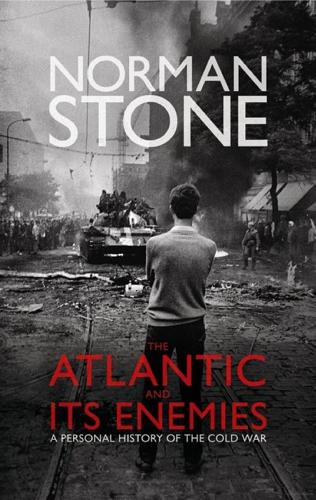
The Atlantic and Its Enemies: A History of the Cold War
by
Norman Stone
Published 15 Feb 2010
The young Erich Honecker being voted first chairman of the Free German Youth; a post-Christmas meeting of the French Communist Party at the Vel d’Hiv, Paris, complete with gloomy Christmas tree, both January 1946 7. and 8. Aftershocks. Surviving Jewish families fleeing from Poland in the summer of 1946 following anti-Semitic violence; the origins of the American space programme: a V2 rocket being fired in New Mexico, August 1946 9. and 10. The end of the British Empire. British troops pulling casualties from the rubble of their headquarters at the King David Hotel, Jerusalem, July 1946, and Greek Communist prisoners in Salonica with ‘The British Must Go’ spelled out in French on their shirts, March 1947 11. and 12. and 13.

Lonely Planet Washington, Oregon & the Pacific Northwest
by
Lonely Planet
It’s the tallest of its type on the West Coast. 1Georgetown & West Seattle oMuseum of FlightMUSEUM (%206-764-5720; www.museumofflight.org; Boeing Field, 9404 E Marginal Way S, Georgetown; adult/child $25/16, 5-9pm 1st Thu of month free; h10am-5pm, to 9pm 1st Thu of month; c; g124) It’s no surprise that the city that spawned Boeing has stumped up with one of the nation’s finest aviation museums, chronicling flight history from Kitty Hawk to the Concorde. It’s a multifarious affair gluing together a broad sweep of flight-related memorabilia in several hangar-sized galleries. The exhibits include some of the most ingenious human-made objects that have defied gravity: menacing V2 rockets, Apollo lunar modules and aerodynamic gliders. Alki Beach ParkBEACH (%206-684-4075; 1702 Alki Ave SW, West Seattle; h4am-11:30pm; g37) Alki Beach has an entirely different feel from the rest of Seattle: on a sunny day this 2-mile stretch of sand could be confused for California. There’s a bike path, volleyball courts, and rings for beach fires. 1Green Lake & Fremont oFremont Public SculpturesMONUMENT (btwn N 34th St, N 36th St, Aurora Ave N & Evanston Ave N, Fremont; g5) F You don’t need to pay museum entrance fees to see some of the best and most iconic art in the city.